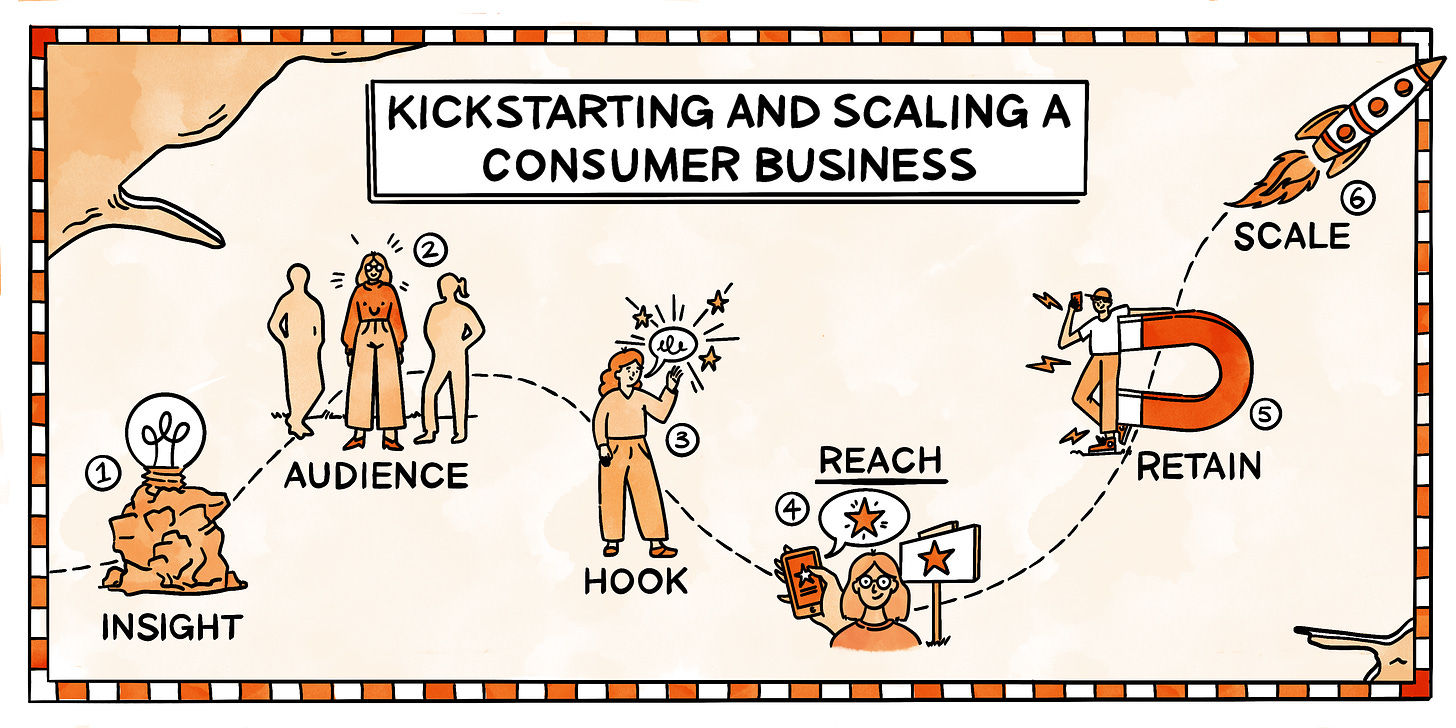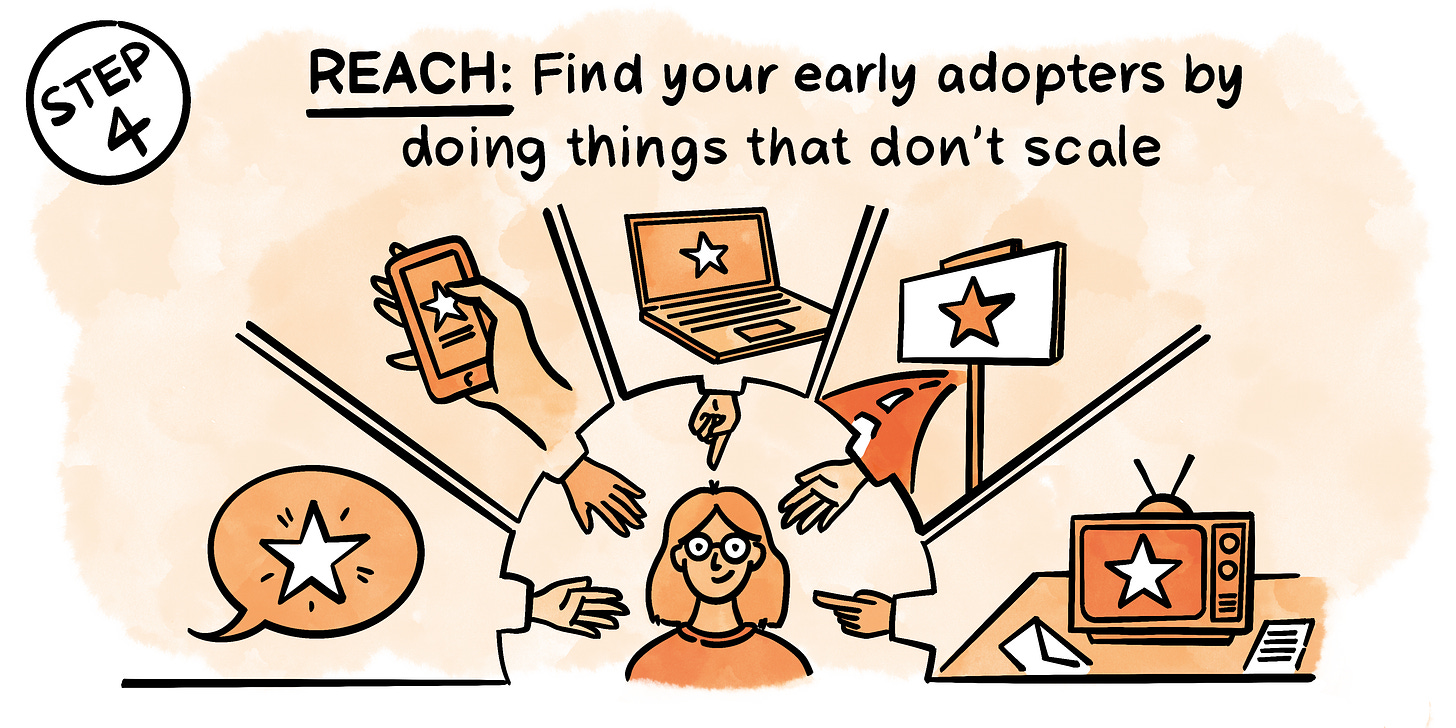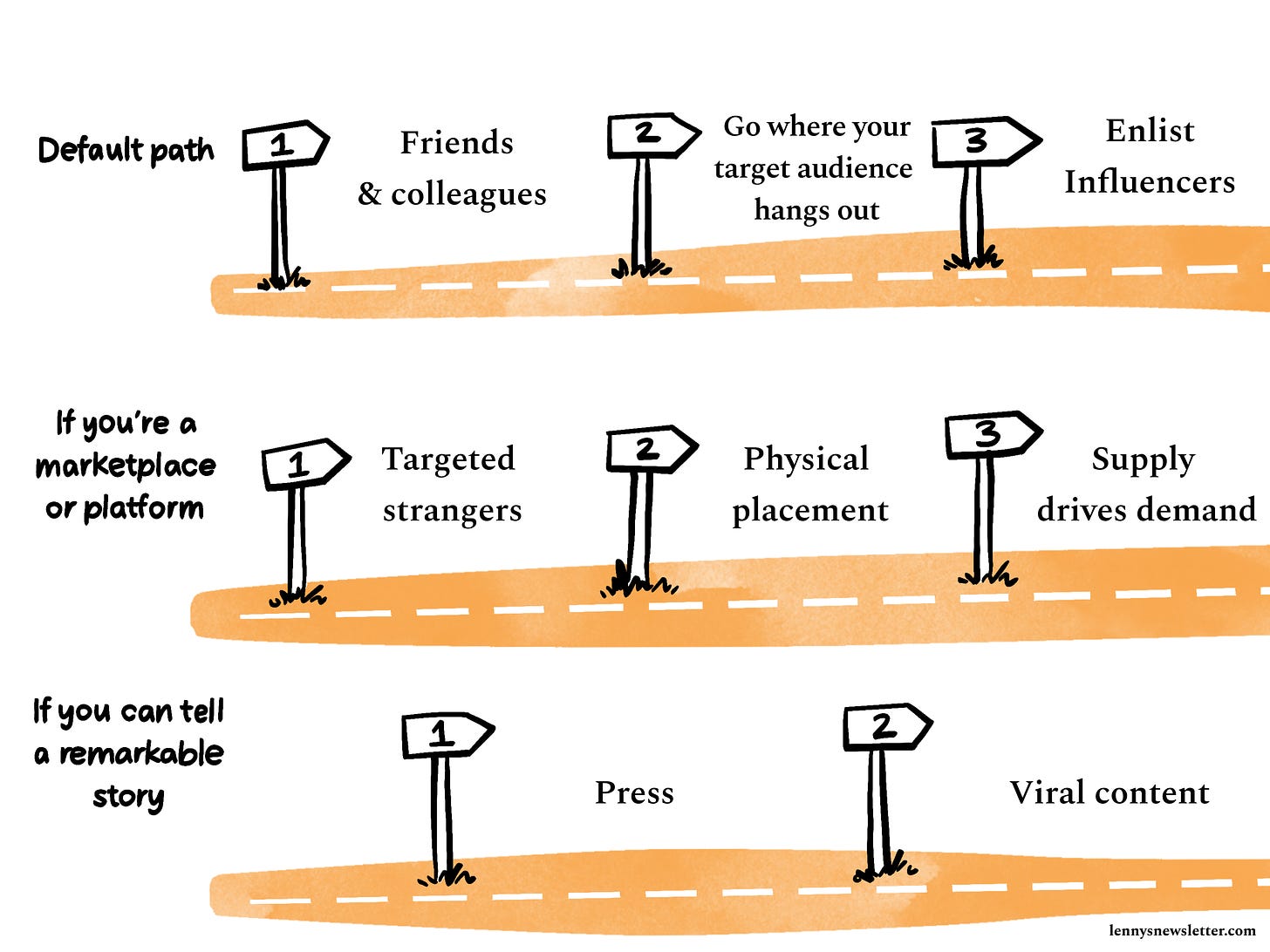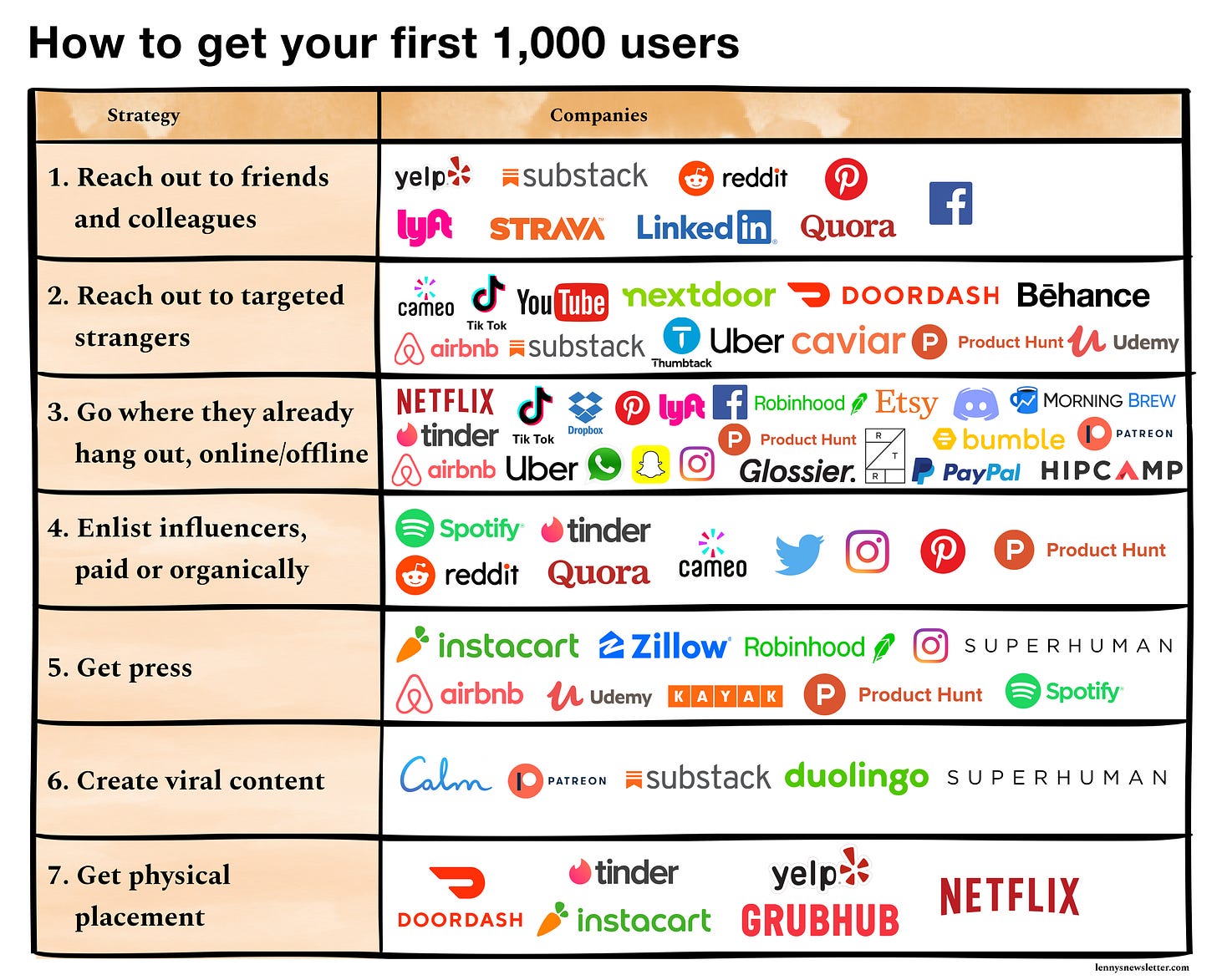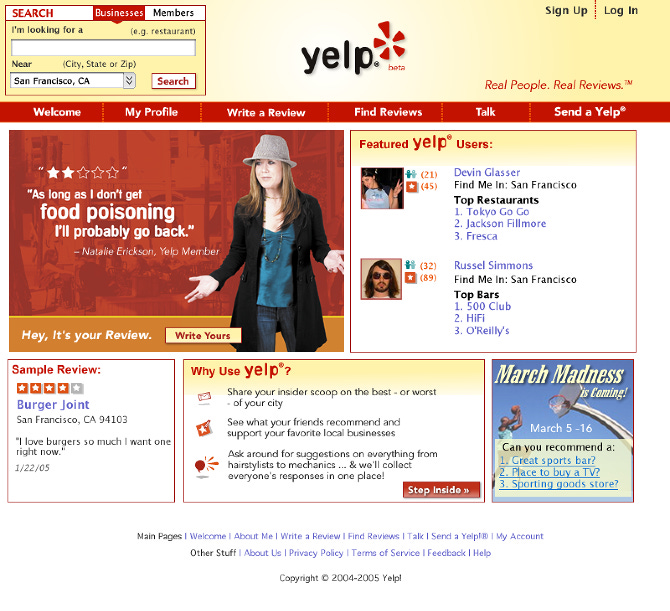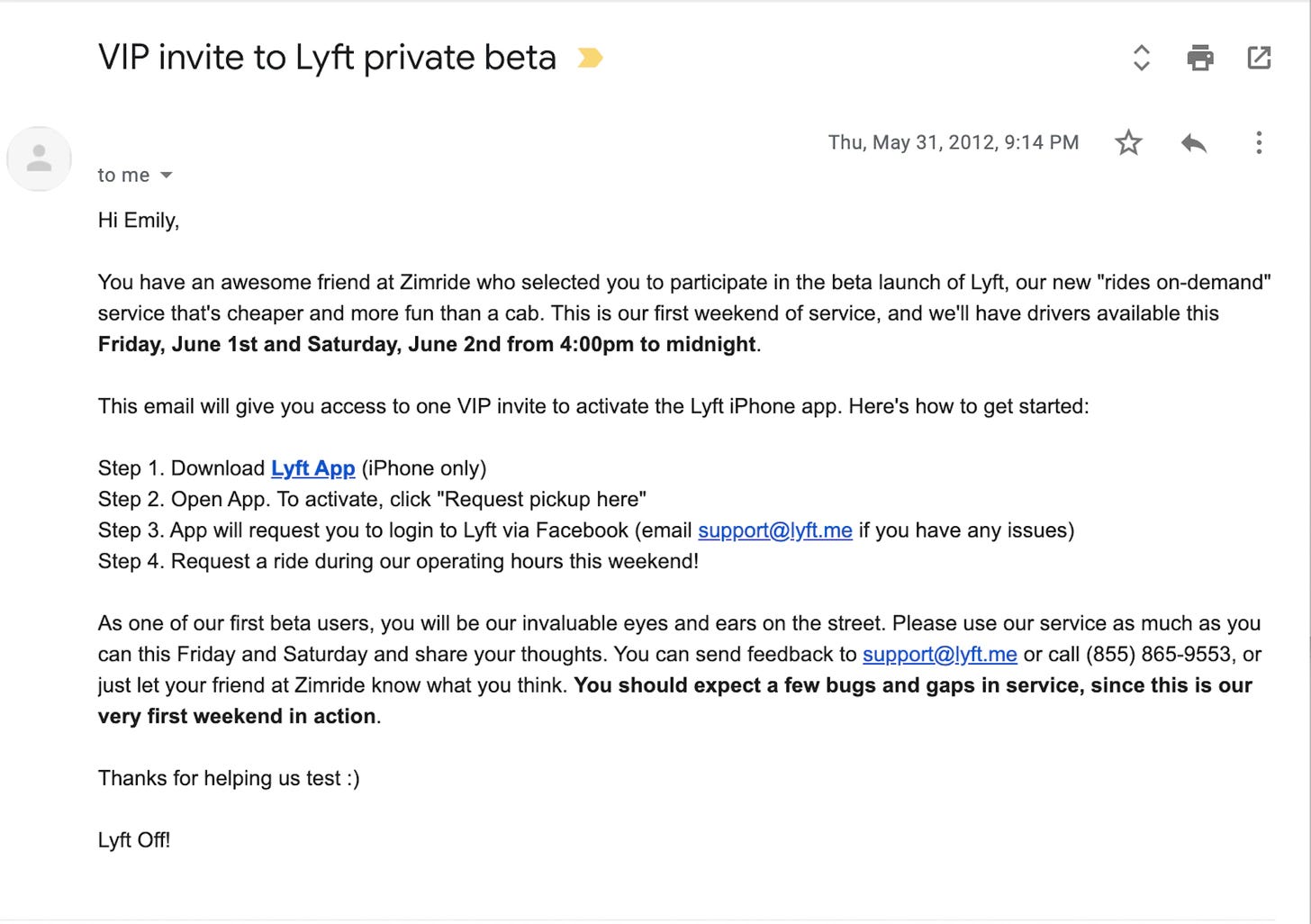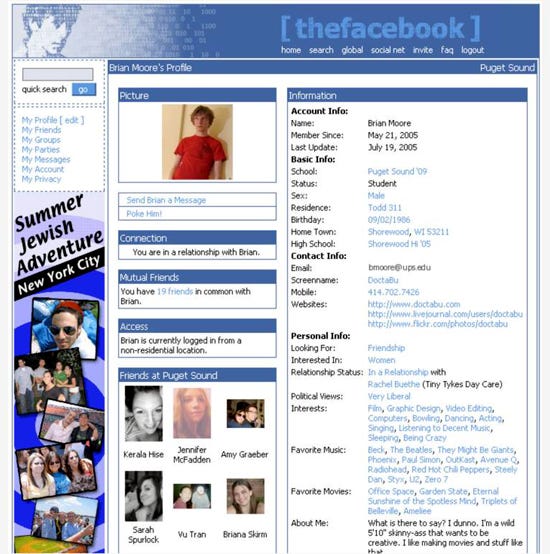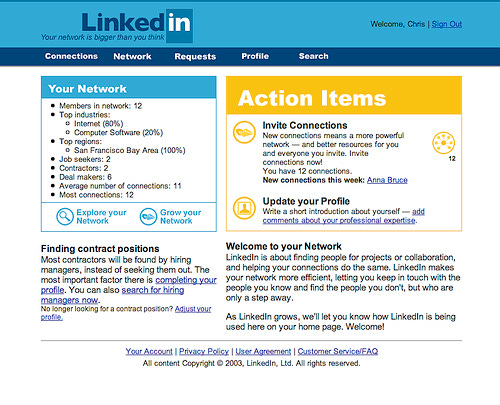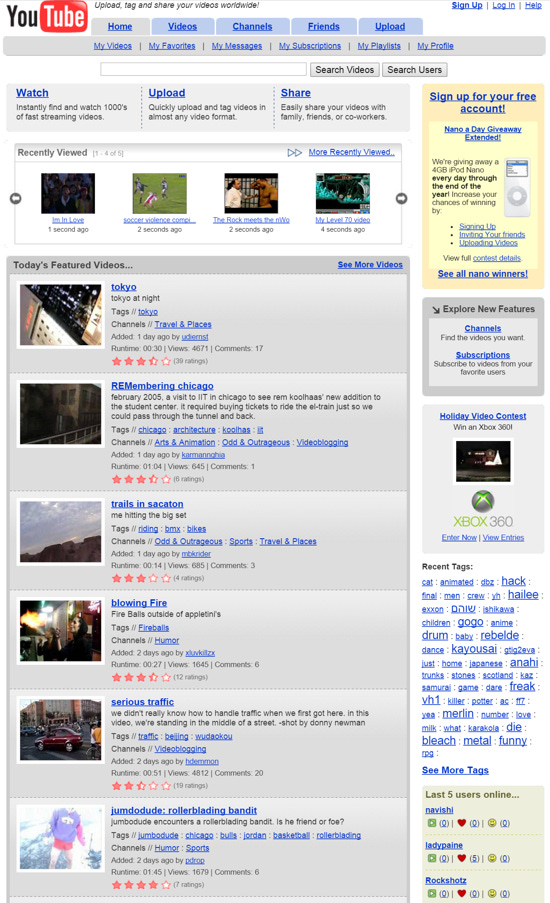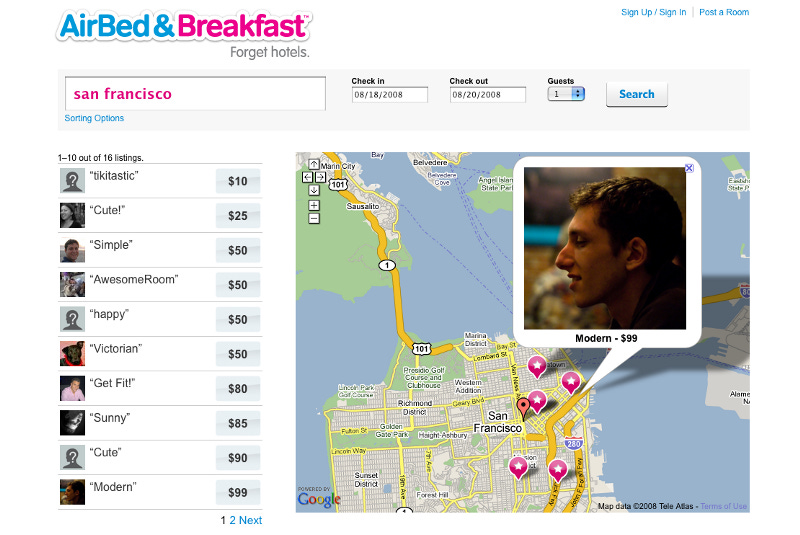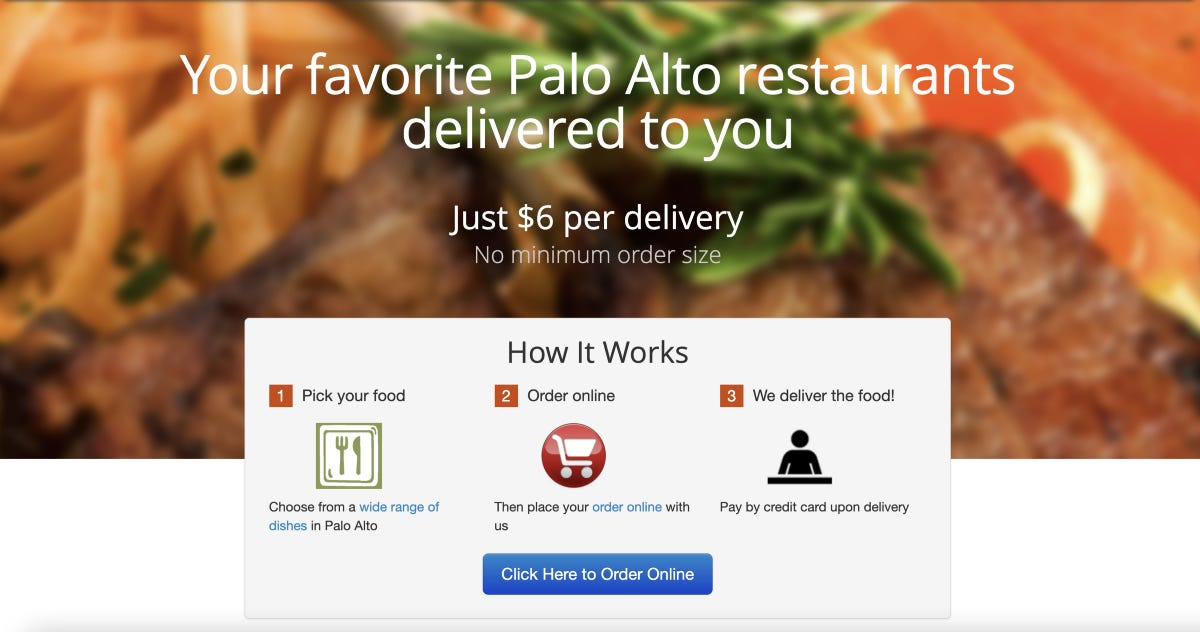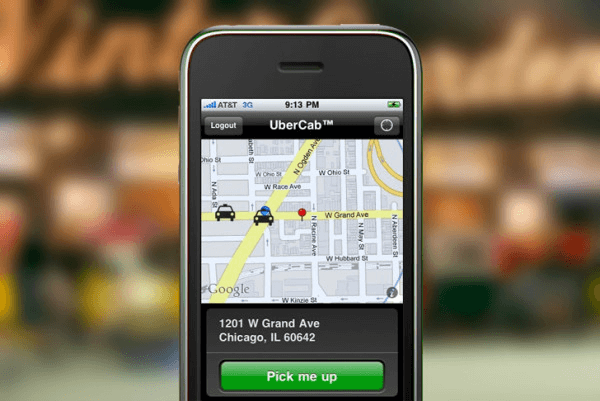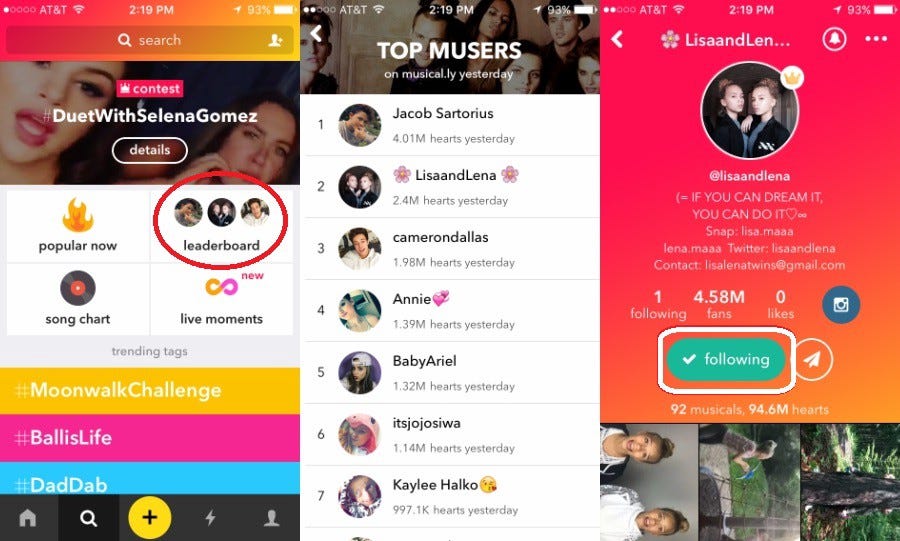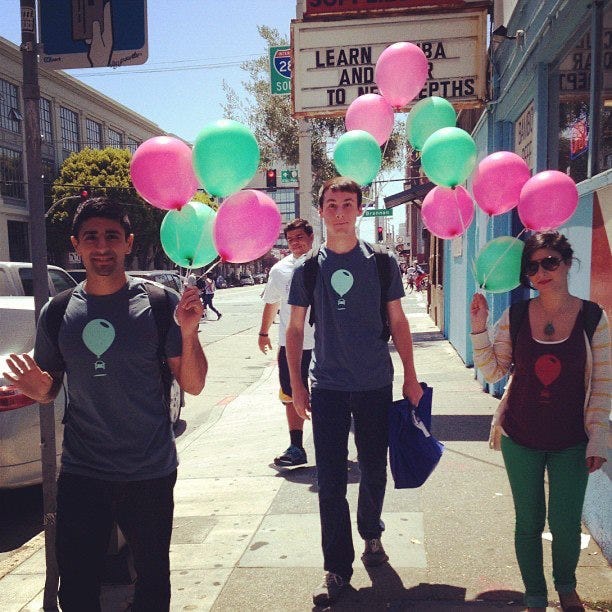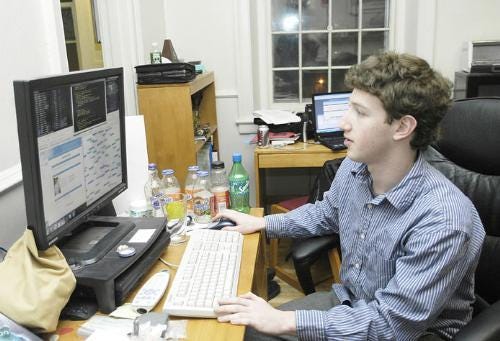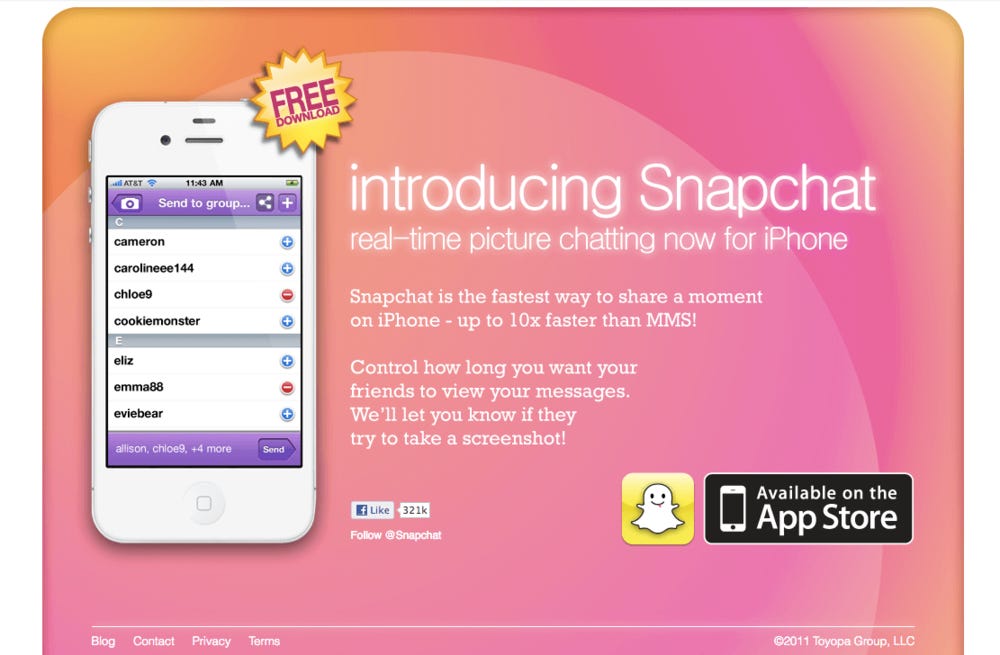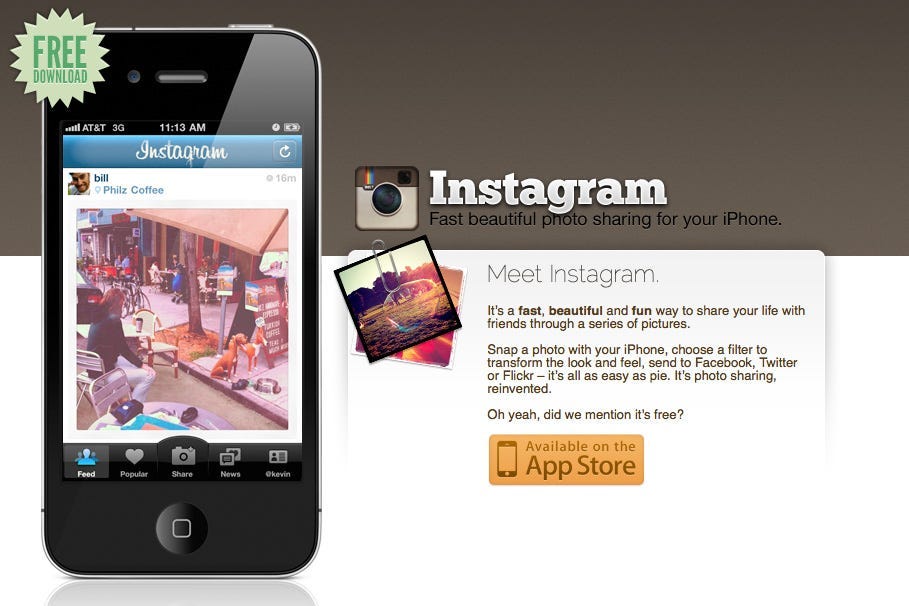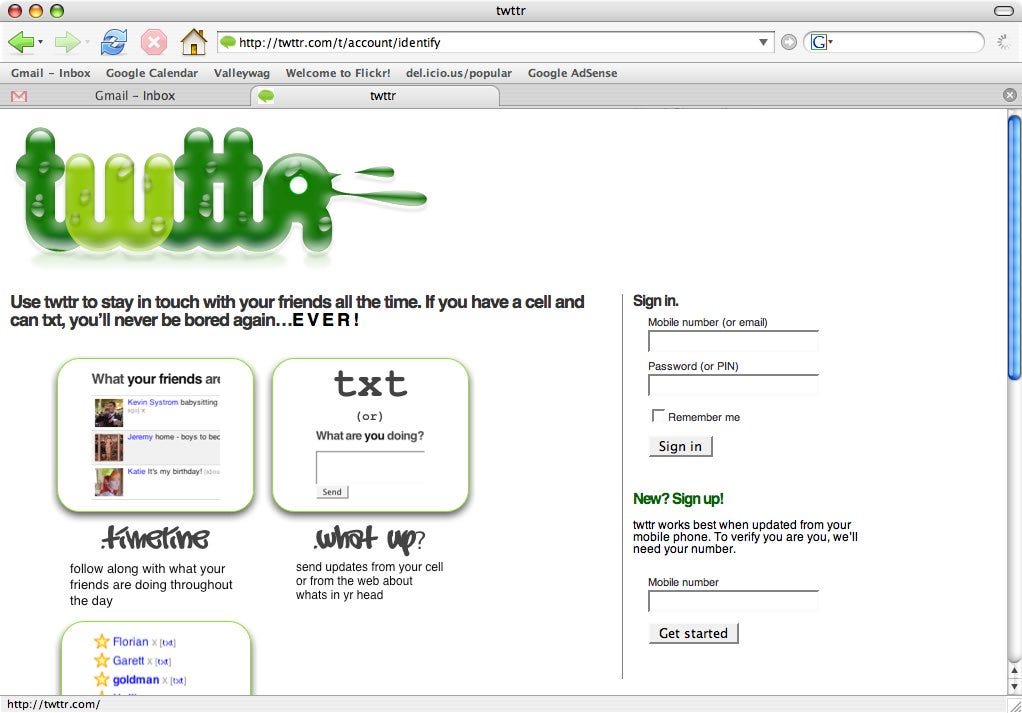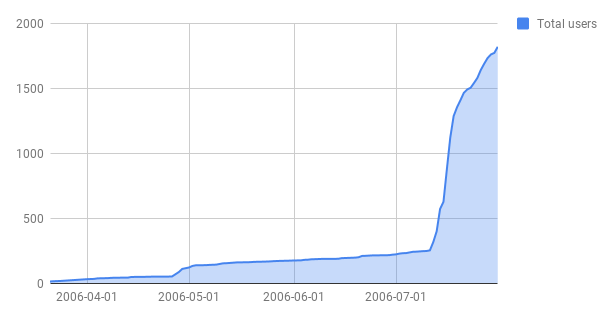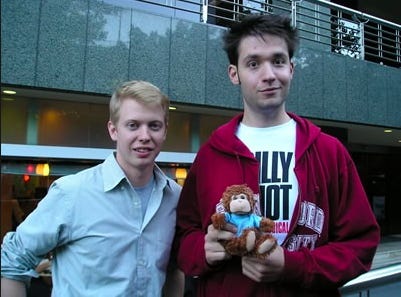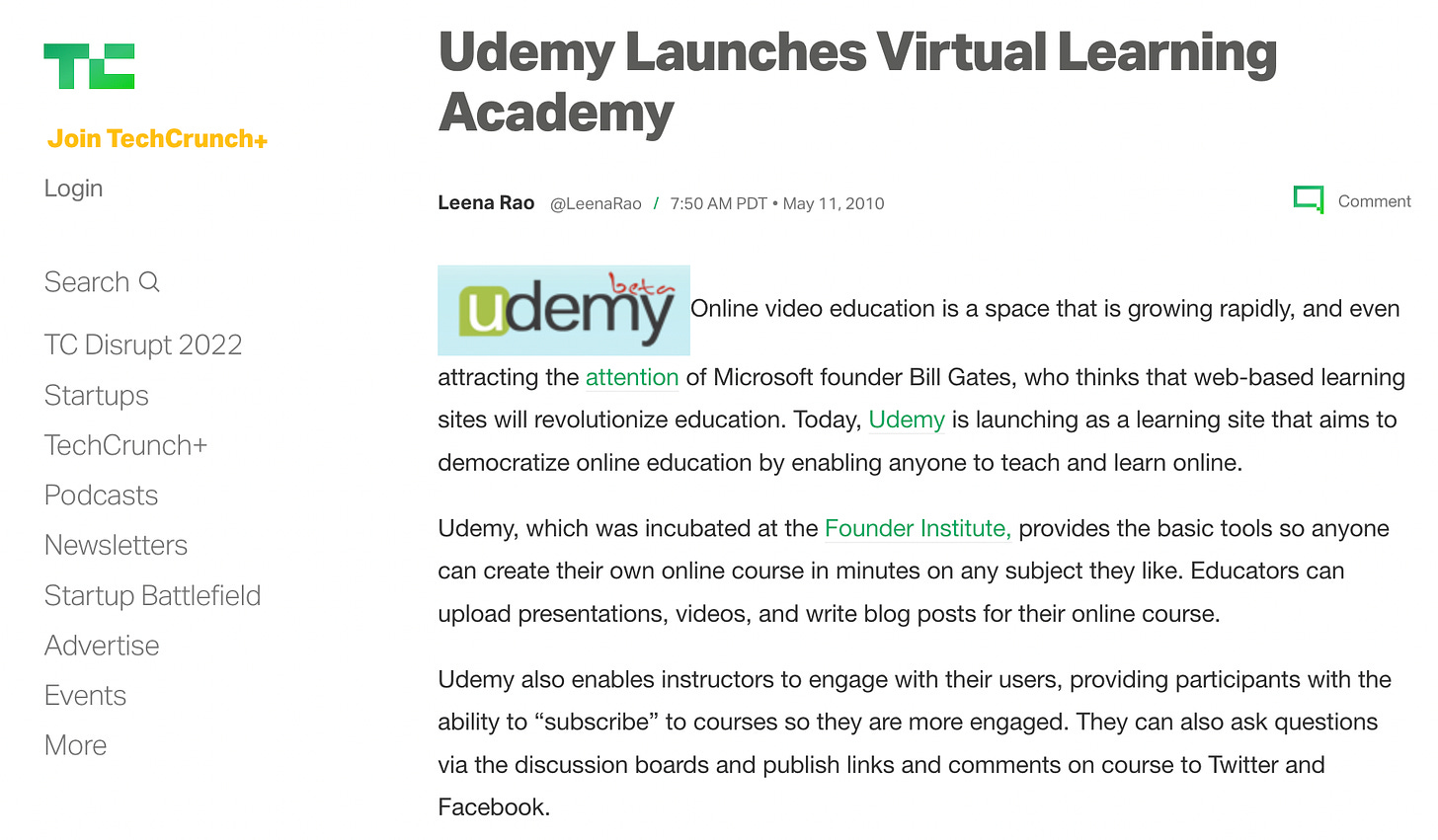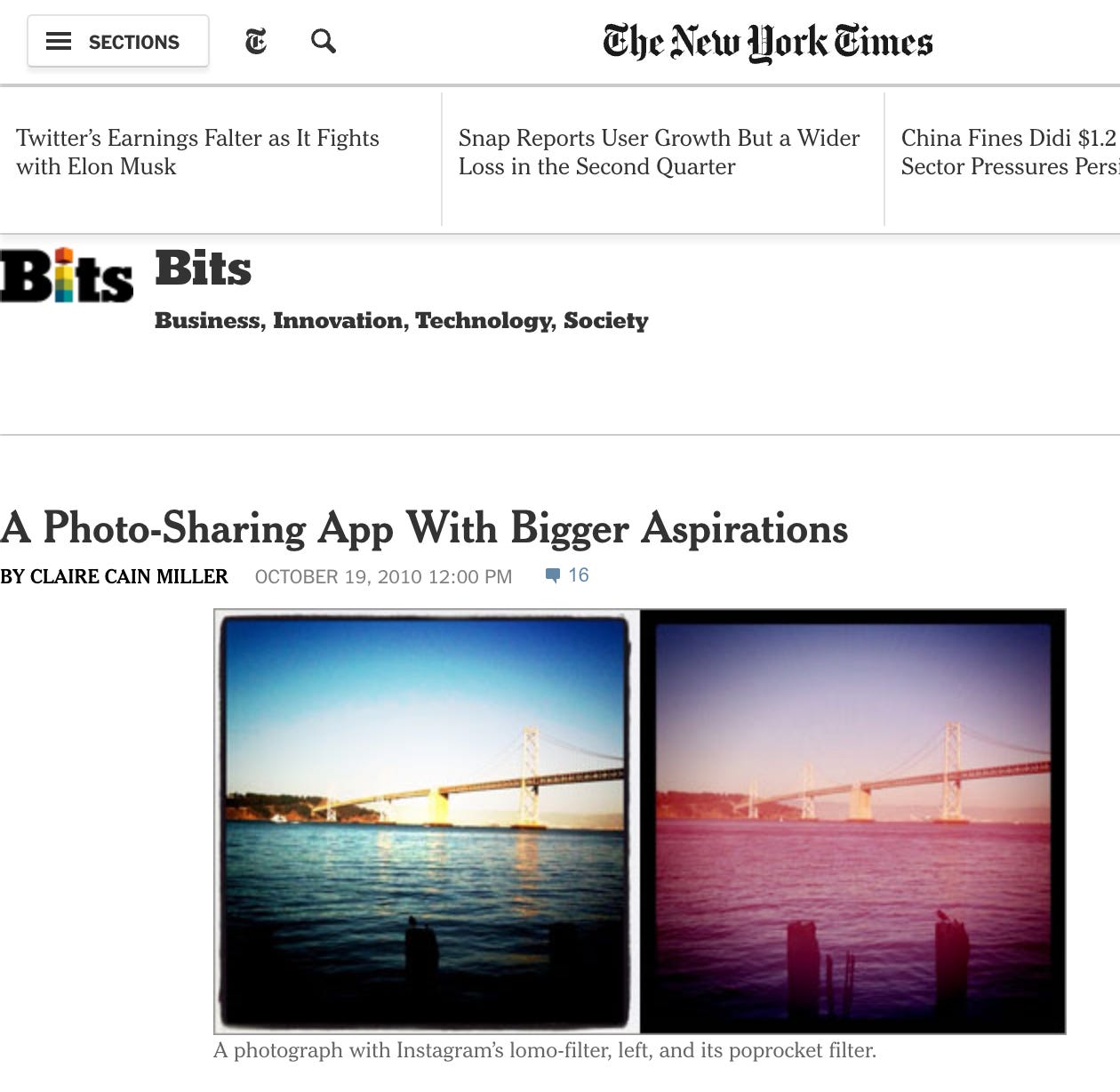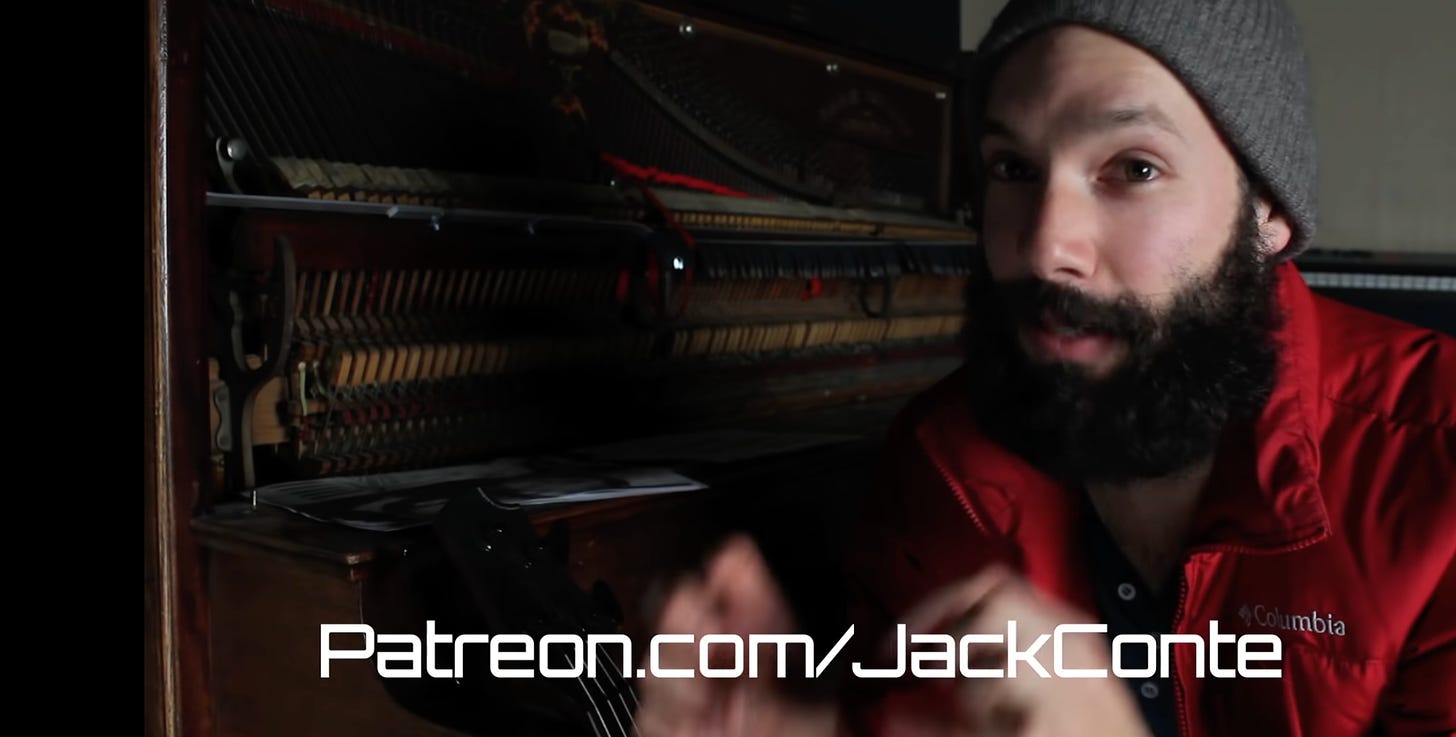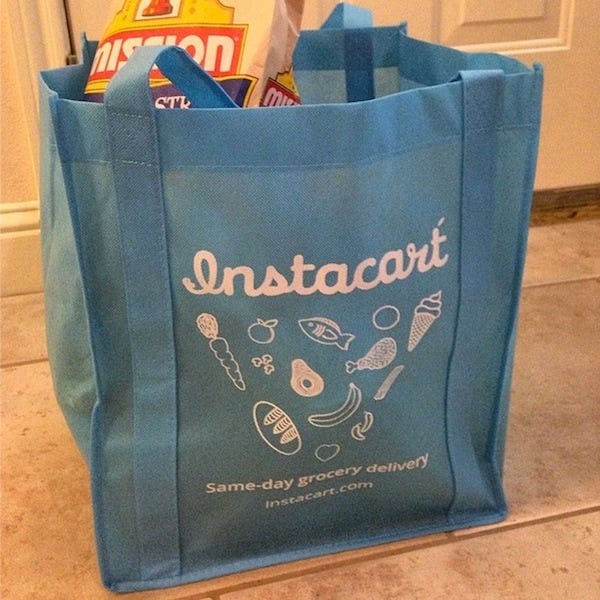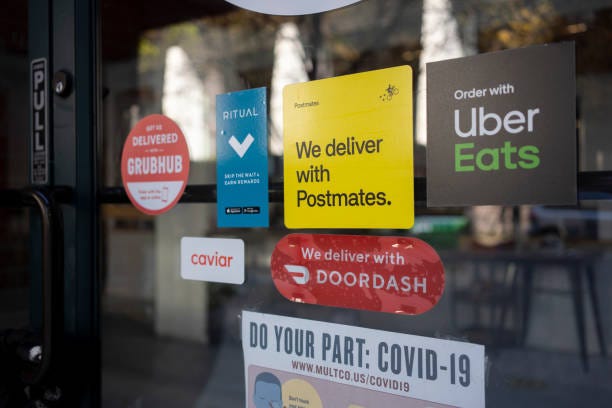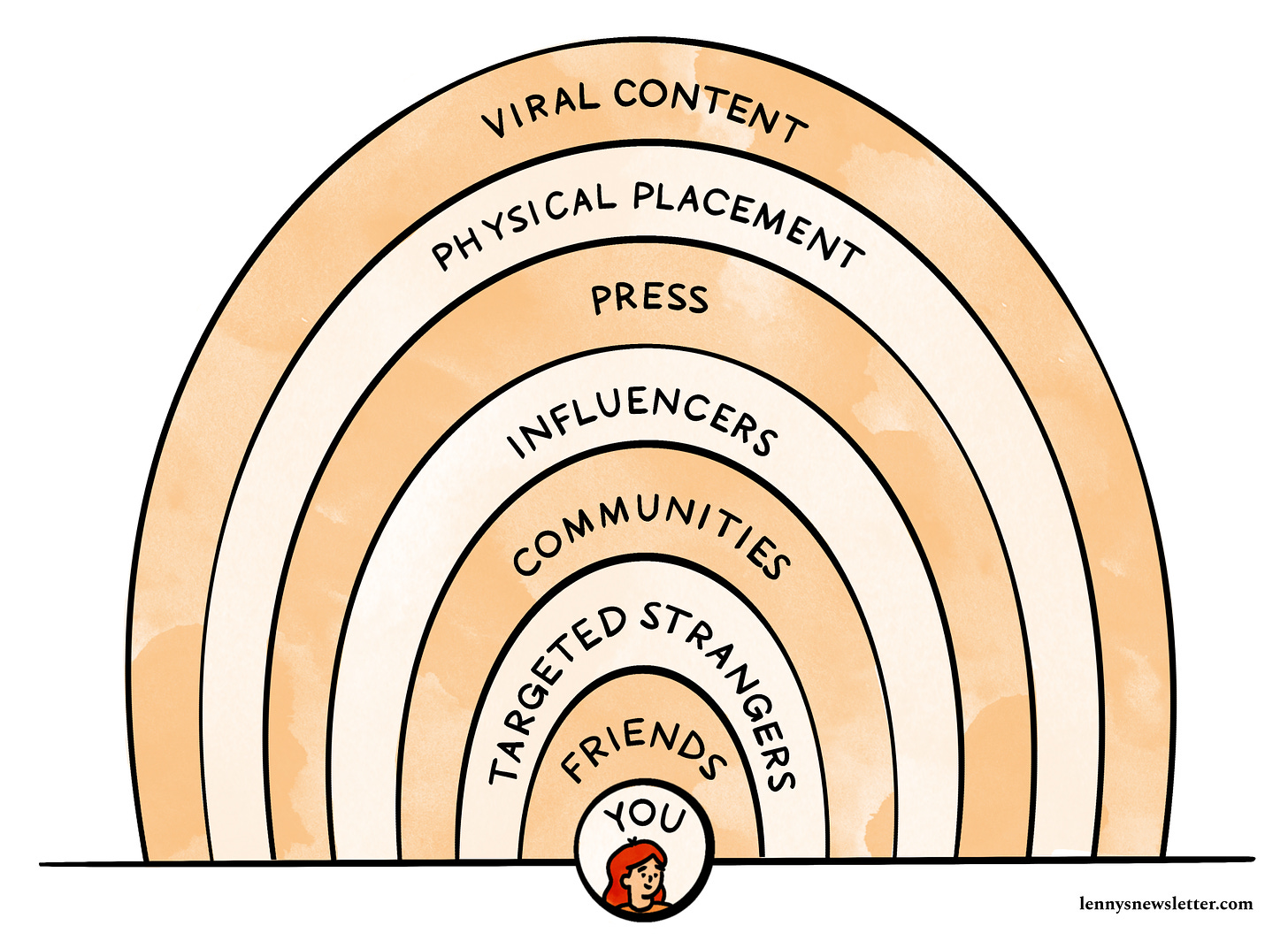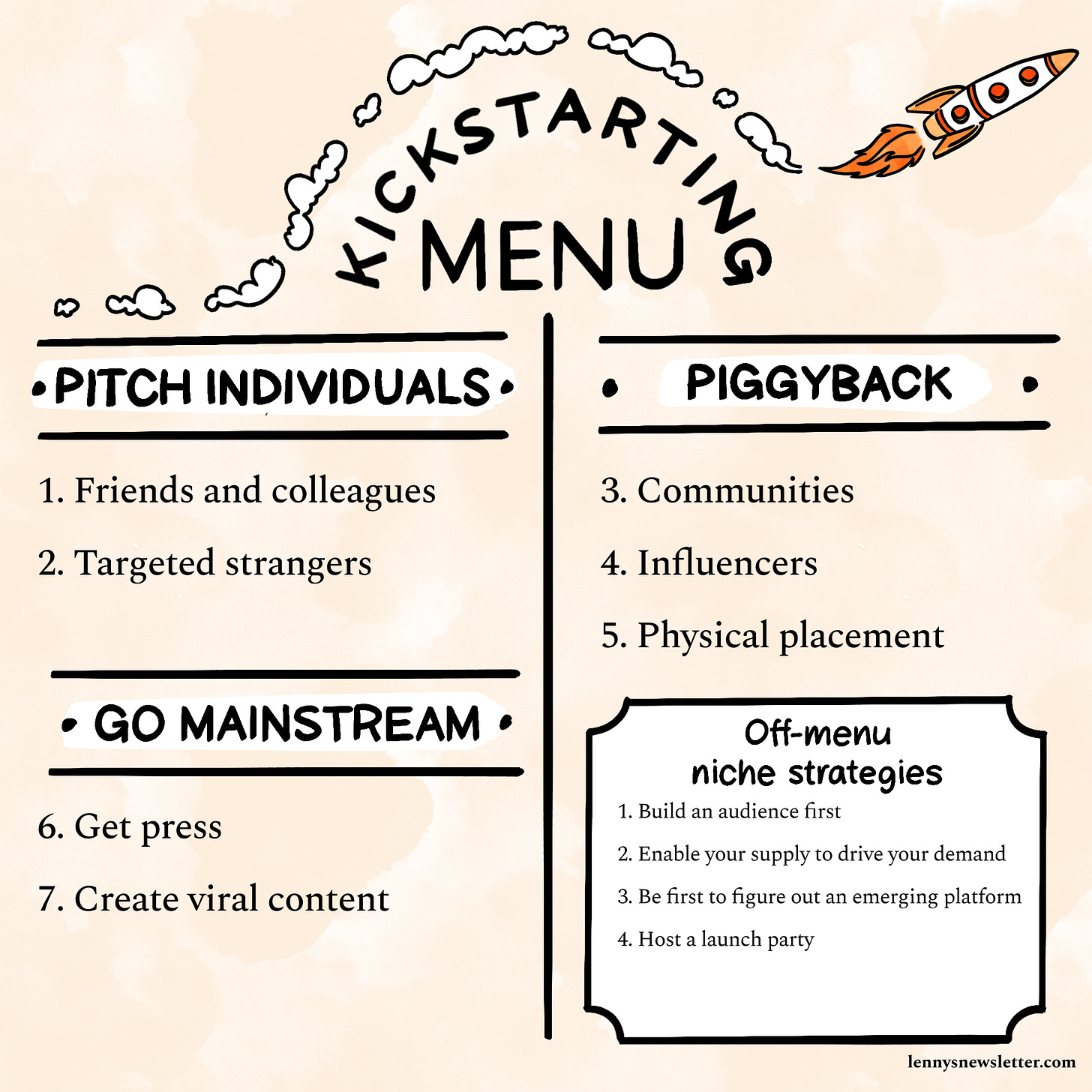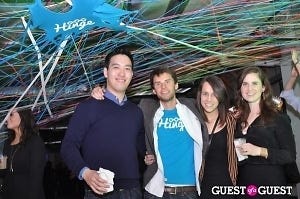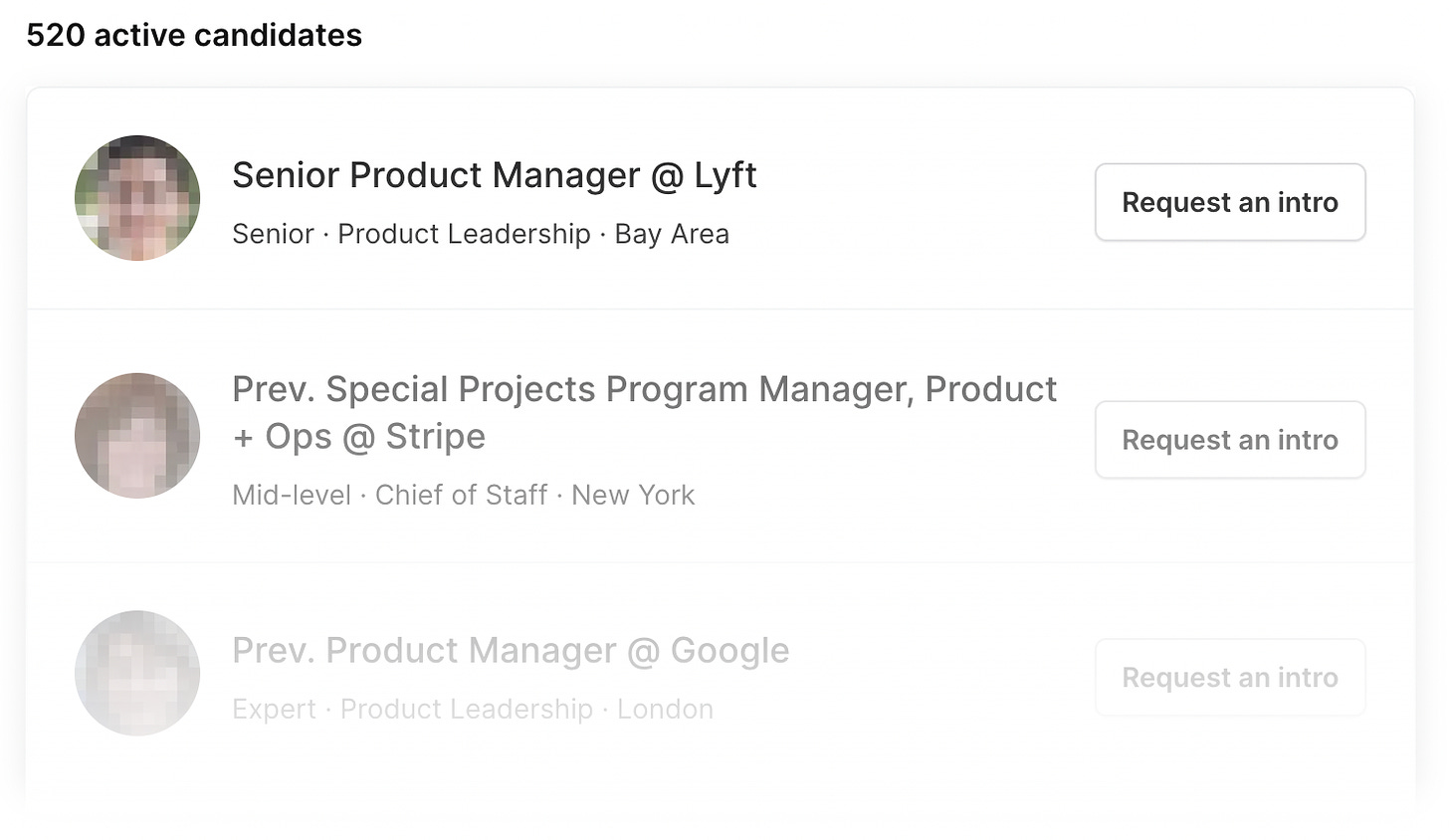

How to kickstart and scale a consumer business—Step 4: Find your early adopters...
source link: https://www.lennysnewsletter.com/p/consumer-business-find-first-users
Go to the source link to view the article. You can view the picture content, updated content and better typesetting reading experience. If the link is broken, please click the button below to view the snapshot at that time.

How to kickstart and scale a consumer business—Step 4: Find your early adopters by doing things that don’t scale
Also, how today’s biggest consumer products got their first 1,000 users
👋 Hey, Lenny here! Welcome to this month’s ✨ free edition ✨ of my newsletter. Each week I humbly tackle reader questions about product, growth, working with humans, and anything else that’s stressing you out about work. Subscribe to get each and every issue.
Welcome to part four (maybe my favorite!) of our six-part series on kickstarting and scaling a consumer business. At this point, you have your startup idea, a good sense of your super-specific who, and a hook. In this post, we bring it all together to go find your first 1,000 users.
If you’re just joining us, here’s where we are at, and what’s ahead:
The big question we’ll be answering in today’s post: How do you find and acquire your first 1,000 users?
This post is an updated and fully revised take on my previous post on this subject (my single most popular post of all time). Again, an important disclaimer: following these steps does not guarantee success—but I’m confident it will increase your odds. Let’s get into it.
Should I try to get press? Run Facebook ads? Find email addresses and cold-email people? Where should I start, and what’s worth my time?
Let’s get right to it. After reviewing the early growth strategies of more than 100 consumer companies, it turns out that there are really only seven reliable ways to find your first 1,000 users:
Reach out to friends and colleagues
Reach out to targeted strangers
Go where your target audience hangs out (online or offline)
Enlist influencers (paid or organically)
Get press
Create viral content
Get physical placement (e.g. flyers, stickers, signs)
You can think of this list as a menu of options for kickstarting your product’s growth:
On occasion, a startup finds success with something “off menu,” and at the end of this post I’m including examples of that for completeness and inspiration. However, the core seven strategies account for 99% of all B2C startups’ early growth.
Like with a menu, your job is to peruse this list, pick two or three items that seem appetizing, and try them. If something works, chow down. If not, try something else.
Note, almost every startup finds the vast majority of their early growth from just one or two channels. Some see all of their early growth come from just a single channel (e.g. Udemy and PR, Etsy and online and offline communities, Twitter and influencers). So my advice is to focus. Don’t order everything on the menu.
How do you decide which tactic to pursue?
To make your decision even easier, here’s what I’ve found to be the three common archetypes of early startup growth:
Typical path to first 1,000 users for consumer startups:
Reach out to friends and colleagues (e.g. email them, post on social media, call them)
Go where your target audience hangs out, online or offline (e.g. forums, Product Hunt, college campuses, Craigslist, etc.)
Enlist influencers
If you’re a marketplace or platform (e.g. DoorDash, Cameo, Substack):
Reach out to targeted strangers (e.g. DM celebs, email owners)
Get physical placement (e.g. stickers, flyers)
Enable your supply to drive your demand
If you have a remarkable story to tell (e.g. Airbnb, Spotify, Superhuman):
Get press
Try to create viral content
Below I’ll share dozens of stories from founders pursuing each of these tactics, but broadly, here’s a summary of which tactics were most impactful for all of the largest consumer tech companies:
Thank you to Alexa Mateen Abdi and Jonathan Badeen (Tinder) Alyssa Ravasio (Hipcamp), Andrew Chen (Uber), Casey Winters (Grubhub), Cem Kansu (Duolingo), Devon Townsend (Cameo), Emily Castor Warren (Lyft), Evan Moore (DoorDash), Gagan Biyani (Udemy), Georg Bauser (Airbnb), Gilad Horev (Eventbrite), Gokul Rajaram (Caviar), Hamish McKenzie (Substack), Joey Grassia (Shef), Max Mullen (Instacart), Michael Horvath (Strava), Nickey Skarstad and Dan McKinley (Etsy), Nikhil Jhunjhnuwala (Noom), Rahul Vohra (Superhuman), Russel Simmons (Yelp), Ryan Hoover (Product Hunt), Sander Daniels (Thumbtack), Scott Belsky (Behance), Sriram Krishnan (Spotify), Stefan Heinrich Henriquez (TikTok), and Steve Chen (YouTube) for sharing your stories with me for this post 🙏
How to find your first 1,000 users
Strategy 1: Reach out to friends and colleagues
The easiest and fastest way to find your early users, and a large driver of early growth for about 20% of startups, is to reach out to your friends and former colleagues.
There’s little downside to giving this a shot, but just don’t get discouraged if it doesn’t bear fruit, as your friends may not be anything like your super-specific who.
Ideal for: Products that most people will find useful (e.g. Reddit, Facebook, Lyft)
Key: Your friends are close to your super-specific-who definition
Takeaway question: Have you asked your friends to try out your product yet?
Stories that show this tactic in action:
“Inviting people from our network (mostly former coworkers from PayPal) drove our initial users. We asked all our network to invite their friends, and being startup people who wanted to help us, they obliged, so two degrees out, we probably got to 1K or so users. The takeaway is not to underestimate the power of one’s personal referral network and to think deeply about the incentive and mechanics.”
—Russel Simmons, co-founder
“Before we launched the Lyft waitlist, we first sent personal email invites to our friends.”
—Emily Castor Warren, early employee
“[Mark] Zuckerberg’s friends made up most of the 10 first Facebook sign-ups, after which the social network expanded to friends of friends across campus. Eventually it swept all Ivy League colleges, the nation, and then the world.”
Strava
“We started with friends and asked them to invite a few friends. We got to about 100 with direct friends, and then it spread to about 1,000 by the end of the first 12 months by word of mouth.”
—Michael Horvath, CEO and co-founder
“Reid [Hoffman] and the rest of the founding team all sent invites to our professional contacts on launch day. We asked all those folks to try the v1 product and invite their professional contacts. In total that was maybe a couple thousand individuals.
During the first seven days, most of the 12,000-odd people who signed up were either 1st degree (e.g. directly knew someone on the founding team) or 2nd degree (‘friend of a friend’ of someone on the founding team) connections. So virtually all of the people who signed up in the first week were part of the startup ecosystem (so, predisposed to try out new products) and had a direct or indirect connection to the LinkedIn team (therefore more willing to check out a colleague/friend’s new project).”
Substack
“It all started with Bill Bishop, author of Sinocism, who I knew from my days as a reporter in Hong Kong (and later, a visiting reporter in China). He had been publishing Sinocism as a free newsletter for five years, and I was a reader. In 2017 he started telling his readers he was going to put up a paywall. This was around the time that Chris [Best] and I were talking about starting Substack. I asked Bill if he’d be interested in being Substack’s first publisher, and he said ‘Sure!’ So we built the first version of the product to suit his needs and iterated from there. Through suggestions from friends, and friends of friends, I also recruited Kelly Dwyer, formerly of Yahoo Sports and now author of The Second Arrangement, and Daniel Lavery, one of the founders of The Toast and now author of The Shatner Chatner. They were the first three publishers on Substack. And from there, I kept asking smart friends, many of whom worked in media, for writer recommendations, and then in each call or meeting with a writer, I’d ask that writer for more recommendations.”
—Hamish McKenzie, co-founder
Quora
“Quora launched in January 2010 with a user base largely composed of [Adam] D’Angelo’s and [Charlie] Cheever’s college and high-school friends, meaning there was a lot of early Quora information on the best places to eat in Pittsburgh, Pennsylvania, where Cheever was raised. But they also built a feature into the site whereby users could invite people, and soon their friends from Facebook were summoning people from other startups, and other entrepreneurs.”
But be careful—your friends may not be the best source of inspiration, as WhatsApp co-founder Jan Koum found:
“He demoed WhatsApp to some friends, but none of them liked it. Moreover, issues like battery draining, crashing of the app, etc. made Koum so disappointed that he lost all hope and started to look for a new job.”
—Aashish Pahwa, via Feedough
And it doesn’t always work out, as Patreon co-founders Jack Conte and Sam Yam experienced:
“Jack obviously had a huge plan to launch to his whole audience. And on top of that, he had this whole network of artists and creators, and we were going to be launching on day one with just millions of fans and artists talking about how you could support them on Patreon.
So we made a list of like 40 or so creators we knew, people who have local, small followings, folks who I thought, like, ‘Hey, you’re in the same boat that I’m in right now; do this, I think this could be valuable to you.’ We made an Excel spreadsheet with those folks, and I found their contact info and reached out to all 40 of them. And all 40 of them said no.”
—Sam Yam, co-founder, via How I Built This
Strategy 2: Reach out to targeted strangers
The second most common way to acquire your first 1,000 users, important for the early growth of 30% of consumer startups, is to go recruit them directly, either through email, DMs, phone calls, or door to door. Interestingly, this tactic was almost exclusively used by marketplace startups to bootstrap the supply side and rarely used by non-marketplaces. I imagine this is because one unit of supply is worth a lot to a new marketplace, and so the ROI on this manual cold outreach is high enough.
Ideal for: Marketplaces and platforms
Key: Each new user you recruit is highly valuable (e.g. a Cameo celebrity)
Takeaway question: Would it be worth having someone on your team ping 100+ people directly?
Here are some stories that illustrate this tactic in action:
Cameo (supply side): DMs
“The founders hired $10/month interns to DM talent on Instagram and Twitter. The bet was that they could bring on celebrities and influencers who would message to their audience that they could be booked on Cameo, driving user growth. The interns ended up punching above their weight.”
—Stefan Heinrich Henriquez, early employee
YouTube (supply side): Email
“For the entirety of the summer of 2005, it was a lot of experimentation—going after bloggers, video bloggers, photographers, pets communities, etc. It was a lot of trial and error in guessing what type of content creators were looking and [were] in need of a service like YouTube.”
—Steve Chen, co-founder
Airbnb (supply side): Phone, email
“Direct sales was critical to get the first listings on the platform, especially in immature markets without critical mass. It enabled us to pick and choose different supply types and build the right mix of homes. The local teams were accountable for their market and could themselves decide which supply to acquire, e.g. in which neighborhood, what size of the listing, and price points.”
—Georg Bauser, early employee
DoorDash (supply side): Door to door, phone
“In the beginning it was me going door to door to convince restaurants to join. Thinking about how to convince them to join. I don’t think there was anything else that could be substituted for that.”
—Tony Xu, co-founder
Thumbtack (supply side): Email
“We used email marketing to get our first 1,000 users. We found email addresses of local service professionals and messaged them letting them know we existed. If they registered with Thumbtack, we would start sending them job leads. The number-one thing any local service professional wants is new customers. We found new customers for them, notified them via email, and they signed up.”
—Sander Daniels, co-founder
Caviar (supply side): Door to door, phone
“For us, for supply growth, it was direct sales/field sales—no question!”
—Gokul Rajaram, early employee
Uber (supply side): Phone
“Uber Black was initially ops- and phone-driven. They would call limo companies to pitch them. A lot of limo companies were sole proprietorships, and the pitch was ‘While you are waiting for trips, we’ll guarantee you a minimum level of income if you keep this app on.’ ”
—Andrew Chen, early growth leader
Musical.ly/TikTok (supply side): DMs, email
“Some people say that influencers bring their own demand. I wouldn’t blankly state that but rather say that you can offer something unique that money can’t buy: you will meet a lot of open ears, and influencers might stick around. Influencers, just like any other stakeholders, need to buy into your mission, and you have to be genuine about your interest in building a joint community. Otherwise you are just another brand/client. Once you create a community with them, they will start telling their fans.
So basically: Reach out to specific celebrities/influencers directly -> Celebrities/influencers engage their fans and bring their demand -> Celebrities get $ > They share this with their celebrity/influencer friends > use likeness to promote to more lookalike fans.”
—Stefan Heinrich Henriquez, early employee
Substack (supply side): Email
“I searched for top newsletter writers through old media stories about the most interesting TinyLetters, etc. (which is how I found Griefbacon, one of the original Substacks). The more quality writers we brought on, the more the good word spread about Substack and the quality writers who were using it. And of course, many of those writers’ readers were quality writers themselves. Virtuous cycle.”
—Hamish McKenzie, co-founder
Udemy (supply side): Door to door, phone
“After we manually created some successful courses, we had proven the value of teaching a course in the first place. We then went to some experts in programming, technology, and entrepreneurship and convinced them to teach courses. These are the same people we talked to six months prior, but this time we had proof that you could be successful on Udemy. It was enough to convince two more instructors to join—Zed Shaw and Bess Ho. They were more successful than our previous instructors, so we convinced 5 to 10 more to join that summer.”
—Gagan Biyani, co-founder
Nextdoor (supply side): Door to door, phone
“Back then, the founding team knew that it would only work if they could find a neighborhood to embrace the idea of a social network for neighborhoods, as well as test it along the way. Choosing the right neighborhood was essential.
That neighborhood is known as Lorelei. Nestled close to the Bay on streets shaded by trees, the neighborhood was close-knit and small yet vibrant, with the longest-standing homeowner’s association in the state of California. The community already had some ways to communicate with each other, which was a promising sign. We reached out to board members of the homeowners association, and they were more than willing to hear us out. After an initial conversation, they invited us to present the concept to more residents at their next board meeting.”
—Sarah Leary, co-founder, via Nextdoor
Behance (supply side): Email
“We got our first 100 users by contacting the 100 designers and artists we admired most and asked if we could interview them for a blog on productivity in the creative world. Nearly all of them said yes. After asking a series of questions over email, we offered to construct a portfolio on their behalf on Behance, alongside the blog post. Nobody declined. This initiative yielded a v1 of Behance that was jam-packed with an average of about five ‘projects’ each from 100 top creatives, built the way we wanted (which set the standard for new members). This manual labor was the most important thing we ever did. It solved our chicken-or-egg problem.”
—Scott Belsky, founder
Shef (supply side): Intros from friends
“We began by serving immigrant communities in the Bay Area—allowing them to easily share extremely authentic dishes that couldn’t be found at local restaurants. What we didn’t realize at the time was the enormous value in targeting these tight-knit communities, who share many cultural traditions, including food.
We found our first shefs by asking where our friends were purchasing their authentic dishes, then onboarded those shefs. They had their favorite neighborhood cooks who they were already ordering from (usually using WhatsApp or WeChat), and many of these folks were also on FB Groups (of that specific immigrant community). We asked for intros, and joined these groups.”
—Joey Grassia, co-founder
Strategy 3: Go where your target audience hangs out, online or offline
The single most popular (over 50%!), effective, and highest-ROI strategy for finding your first 1,000 users is to find an existing gathering spot for your super-specific who (this is why it’s important to be very clear and focused about who these people are) and get in front of them there to pitch them. This can include niche online forums, events, transit hubs, Hacker News, Product Hunt, college campuses, malls, or even an REI.
Ideal for: Most products, if a community or meeting point exists
Key: Provide real value to people (vs. just spamming your pitch)
Takeaway question: What are 1-2 places where your super-specific who already gather?
Stories of this tactic in action:
Netflix: DVD forums (online)
“We realized early on the only way to find DVD owners was in the fringe communities of the internet: user groups, bulletin boards, web forums, and all of the other digital watering holes where enthusiasts met up.... Posing as a home theater enthusiast or cinephile, [Corey Bridges] would join the conversation in communities geared toward DVD fanatics and movie buffs, befriend the major players, and slowly, over time, alert the most respected commenters, moderators, and website owners about this great new site called Netflix. We were months from launch, but he was planting seeds that would pay off ... big time.”
—Marc Randolph, via That Will Never Work
Morning Brew: Business classes (offline)
“The model we used in our mind was this hub-and-spoke model. Who are the hubs that have access to all of these spokes—the spokes being the people we want reading our newsletter? What we decided was this was professors of business classes or it was presidents of business clubs. So Austin and I just pounded the pavement to get into every big business class in Michigan, [every] lecture with 75 to 500 people. We got into all the clubs, and we would basically give our spiel at the beginning.... We got a couple thousand people from Michigan.”
—Alex Lieberman and Austin Rief, founders, via How I Built This
Discord: Final Fantasy subreddit (online)
“The tipping point arrived via Reddit. The team was connected with a member of the Final Fantasysubreddit and asked them if they’d mention Discord. According to [co-founder Jason] Citron, they posted something along the lines of, ‘Has anyone ever heard of this new voice over IP app called Discord?’
A few Redditors trickled in, checked out the product, and spoke with the development team via the platform. One reported back, ‘I just talked to the devs, they’re in there. It’s really cool. Check it out.’
That one comment was a miniature inflection point. More users flowed in, and Discord had figured out a grassroots distribution model. ”
—Packy McCormick, via Not Boring
Etsy: Craft fairs (offline)
“We did something that works and is often overlooked. We got off the internet and there was a team out there across the U.S. and Canada attending art/craft shows nearly every weekend. Supporting potential sellers (we would buy them lunch, drop off ‘craft show kits,’ pass out handmade promos)—these were artists/crafters that were influential in the handmade world. We knew if they set up shop on Etsy, and were successful, others would follow.
The community team went to a different show every single weekend all across the U.S. and Canada. Most sellers I knew did not have any other kind of online presence or activity on other sites.”
ーDanielle Maveal, via Quora
Etsy: Craftster.org (online)
“We ventured to build a marketplace for this apparently underserved niche, and while doing so we became familiar with Craftster.org (which at the time was another message board consisting of around 100,000 people). We reached out to Craftster’s founder [Leah Kramer] and suddenly we had an audience with an even larger group of interested sellers.
By the time we launched the site (roughly two months after conception), we had thousands of sellers excited to register and try it out. The ball started rolling almost immediately (especially since we offered fee-free listing for the first few months while we built a billing system).”
ーChris Maguire, co-founder, via Quora
Behance: StumbleUpon, Reddit, Pinterest (online)
“For our first 1,000 users, there were a few hacks I found especially helpful in this phase. One was using sites like StumbleUpon, Reddit, NotCot, and others (and eventually Pinterest) that featured great work around the web with a link-back.
I remember sending tons of ‘I noticed your work on MySpace/DeviantArt/etc. and thought you’d enjoy showcasing your work on Behance’ type of emails. The more personal these emails were, the better they converted. And I figured, for every great member we had, many of his or her admirers would follow. We have evidence to prove that the majority of new members joined because of someone they admire. My simple daily practice was to bring in 10 amazing new members every day. Whether it took a phone call or me building their portfolio for them, we were willing to do whatever it took because we were so convinced by the network effect.”
—Scott Belsky, founder
Lyft: Startup offices (offline)
“We asked everyone on our team to give us their list of contacts at startups, and we contacted them to ask their permission to come by with a free Bi-Rite ice cream sundae drop-off for their employees. They basically all said yes, because Bi-Rite is delicious. :) So we arranged a drop-off operation and had teams of staff with insulated bags taking ice cream sundae kits to all of the companies and giving them Lyft credits.”
—Emily Castor Warren, early employee
Uber: Transit hubs and startup offices (offline)
“There was a very significant use of street teams early on at Uber. They went to places like the Caltrain station and handed out referral codes. There are stories about how Travis [Kalanick] went to Twitter HQ personally and handed out referral codes.”
—Andrew Chen, early growth leader
Dropbox: Hacker News, Digg, Reddit (online)
“We started with the early adopters intentionally—who are the people who are actively looking for something like this? They tend to be people who hang out on HN or Reddit. Getting your files on multiple computers was a niche problem. But this audience was a technical audience; most of them were carrying around a thumb drive. A lot of that community struggled with that problem.”
—Drew Houston, co-founder, via How I Built This
“The HN post did great—it stayed at the top of HN for two days (this was in April 2007, when HN was much, much smaller) and led to Paul Graham sending me a cold email (saying to get a co-founder if I wanted to get into Y Combinator, ha). But for me, the Digg post was the first big sign that Dropbox would resonate outside of the very early adopter community.
The HN post was in April 2007 and the Digg/Reddit posts were in March 2008; we launched publicly/out of closed beta in September 2008. We hit a million sign-ups in May 2009, and it felt like we were celebrating new big numbers (2m, 5m, 10m) every several months after that for a few years.
ーDrew Houston, co-founder
Robinhood: Hacker News (online)
“The last thing from our minds when we launched Robinhood, the initial website, was that it would blow up overnight, so we were kind of cavalier in the way we approached it.
[The website] had a description in very simple language saying, ‘Commission-free trading, stop paying up to $10 per trade.’ And then there was a button that let you sign up, and then when you signed up, you put in your email, and you would join this wait list where we would actually show you: There’s this many people ahead of you, this many people behind you. […]
I remember distinctly it was a Friday night. We had been working on the wait list in preparation for our press launch, which would have been, I think, the following Wednesday or Thursday. Everyone goes home, and I wake up Saturday morning, and I open up Google Analytics, and I see something like 600 concurrents on our site, which nobody knew about at that point. I was just like, ‘What’s going on? This is not normal. Something must be wrong.’ Right?
And I’m looking at the analytics—I see a lot of traffic, or the majority of it, coming from Hacker News. And I open up Hacker News, and I see No. 1: ‘Chinese Land Spaceship on the Moon,’ No. 2: ‘Google acquires Boston Dynamics, the Robotics Company,’ and No. 3 was: ‘Robinhood: Free Stock Trading.’ So, first of all, I was like, ‘Oh man, like, No. 3 on Hacker News? This is sort of like every engineer’s dream in the Valley, right?’ ”
Facebook: Harvard mailing list (online)
“The site went viral within Harvard after a message was sent to a mailing list of 300 Harvard students. New users were encouraged to invite friends, which helped build critical mass within that segment. More users within a segment improved the experience for everyone else within that segment.”
ーSean Ellis, growth leader, via Quora
WhatsApp: Russian emigrants (offline)
“To get the first users [Jan Koum] reached the Russian emigrant community in San Jose through his friend Alex Fishman. That community became WhatsApp early adopters.”
—John Popel, via Reddit
Snap: Malls and high schools (offline)
“Evan [Spiegel]’s mom tells her niece, who’s in high school in Orange County—so this is Evan’s cousin, who’s a high schooler in Orange County—about this app that Evan is working on, and her niece downloads it and thinks it’s really cool and starts using it with her friends in high school.... It sweeps through the school, then it turns sweeping through other high schools in Orange County, then it moves up the state, and then it moves into other high schools in Northern California and in Silicon Valley, and the growth takes off. So by December 2011, Snapchat is up to just over 2,000 users. The next month, January, 20,000 users. Couple of months later, in April, 100,000 users.”
—David Rosenthal, via Acquired
Tinder: College campuses (offline)
“It all started at a launch party we threw (at my parents house, where I grew up, actually) with about 300 students from USC. In order to get in, you had to download Tinder. I actually stood at the door and told people they were not allowed in if they did not download the app. I think those were the first few hundred faces we had on the app.
The following Monday, I went to all the sororities and fraternities at USC. I started with the sororities at the Monday night chapter meetings. I stood in line to make an announcement. My pitch was: ‘Do any of you have any crushes on anyone at school, and are you too afraid to go up to them and strike up a conversation? Do you have someone in a class you kind of want to get to know but don’t know if they feel the same way? Are you nervous that someone you like, doesn’t like you back? Do you feel like you’re seeing the same people every day and want to see new faces around here? Well, now is your chance! You can anonymously swipe on someone and if they feel the same, then it’s a match! All the cool people are on it. All your crushes are waiting for you. You don’t want to miss out, trust me!!’
Next we went to the fraternities, I would run, not walk, from house to house saying the same exact thing: ‘Who wants to find out who likes you on campus? Who wants to see a ton of new faces? Where are the sorority girls on campus? They are on Tinder. It’s not creepy, this is the new thing.’
I actually remember standing on a piano at some point and hearing a round of applause after a speech I made at a frat. People were so excited. I remember calling Justin, the CMO at the time, and he was counting the downloads for me. It was working. I replicated this at SMU the next week (because I went there for a year before USC, and still had all my friends there). After SMU was UCLA and UCSB. A week or two later was my University tour in Boston. There are so many colleges in that small little area. Downloads were skyrocketing.
All the while, I was creating the ‘Tinder University Program’. We made it a program so that this exact recipe would take place at every school we picked, even if I could not be there myself. I would interview people, then choose a few influential students on every campus, send them a box of T-shirts, stickers, keychains, cups, you name it. Basically, a bunch of Tinder swag. And it was their job for that semester to be a tinder Brand Ambassador and to make Tinder popular on campus. I would measure their success with the percentage of people that would download the app within a certain area. It was a numbers game. The Tinder ambassadors would send me photos of events at every cool bar or club where they ‘had to download tinder to get in’. It was amazing. Once I felt an area was saturated enough, I would add another university. I had about 15 universities at a time. It was a domino effect. The more people on the app, the more people wanted to be on it. Total chain reaction. Next up was finding ambassadors outside of the US in different countries.”—Alexa Mateen Abdi, founding team and the head of US expansion
Bumble: College campuses (offline)
“I kind of had a little bit of a playbook [from Tinder’s launch]. I had maybe done it once before. I went right back to SMU, this time decked out in yellow. And I went back into all those sororities and I spoke from the heart. Listen, I have lived through the pain points of male-dominated relationships. I have felt it. I know what it feels like. And guess what? Every other woman in that sorority house, chances are she’s felt it too. I’m speaking from the heart, and I’m speaking to them about how they can be empowered and they make the first move and they go after what they want.
And me and my early team members—the girls are at my office right now; they’re still with us—we went in there, and we took pizza boxes with stickers on it and offered a piece of pizza to the fraternity boys that would get on [the app]. We wrapped cookies in Bumble stickers. We took all sorts of goodies and we kind of growth-hacked our way to success.”
—Whitney Wolfe Herd, co-founder, via How I Built This
Wealthfront: Seminars at startup offices (offline)
“Facebook was about six or 12 months away from IPO. A number of employees had sold secondary stock. We thought, well, who are the best-connected people in Silicon Valley? It’s the people who work at the social networks. So we did three or four seminars at Facebook and LinkedIn where we educated people on investment best practices. Not Wealthfront, because we wanted to get the engineer as the earliest adopter because we thought they would provide the references to the less well-educated people on investing. What we know about engineers is they hate being sold. They’re like cats; they’re not like dogs. Salespeople are like dogs: they want to be petted and loved. Engineers do not want to be sold to.
So we did this beta test, I’ll never forget, with Adam D’Angelo of Quora and a few people at Quora, and the beta test we did of the seminar to eight people was 80% education and 20% selling. At the end of the seminar, Adam said, ‘Andy, you have to decide which one it’s going to be, because it can’t be both.’ He was absolutely right. That was the surprise. So we went all education, and immediately Facebook and LinkedIn people signed up and then used their networks to start telling their friends.”
—Andy Rachleff, co-founder, via Starting Greatness
Pinterest: Apple stores (offline)
“We did all kinds of pretty desperate things, honestly. I used to walk by the Apple Store on the way home. I’d go in and change all the computers to say Pinterest, then just kind of stand in the back and be like, ‘Wow, this Pinterest thing, it’s really blowing up.’ ”
—Ben Silbermann, co-founder, via YC Startup School
Hipcamp: REI (offline)
“I think our first 100 or so users came from sitting at a fold-up table in front of REI and handing out stickers. We’d have them test the website and make sure they added their email to the newsletter field. Then they told friends!”
—Alyssa Ravasio, co-founder
Rent the Runway: College campuses (offline)
“We held trial trunk shows on college campuses, met with everyone we could talk to in order to gather feedback and suggestions, and adapted along the way.”
—Jennifer Fleiss, co-founder, via Forbes
Strategy 4: Enlist influencers, paid or organically
A powerful yet underutilized way to get your early users is to enlist influencers to talk about your product, either by paying them or just by getting them excited about it. Influencers, if you think about it, are people who influence others (duh!), so your job is to figure out who your super-specific who are influenced by, and enlist them in your growth plan. This could be bloggers, newsletter writers, tweeters, Instagrammers, or actual celebs.
Ideal for: Founders who know influencers
Key: Getting the influencer genuinely excited about what you’re building
Takeaway question: What’s at the center of the Venn diagram of (1) who your super-specific who is influenced by and (2) which of them you can get excited about what you’re building?
Some examples of this tactic in action:
“I think the biggest thing overall was that as we were prototyping and testing [Instagram], we gave it to a few folks who had a very large Twitter following. Not necessarily a large following overall, but a very large following within a specific community—specifically, the designer community, the online web design community. We felt that photography and the visual element of what we were doing really resonated with those people. And we gave it to those specific people who had a large following.”
—Kevin Systrom, co-founder, via Stanford Technology Ventures Program
Tinder
“In the early days, although everyone focuses on our on-campus guerrilla marketing, the fact is that we used Instagram, in the early days before Instagram really had an advertising product. We were reaching out to prominent Instagrammers who had a large following and encouraging them to post for us. Because all of the posts were authentic, the signal to noise was very high.”
ーDinesh Moorjani, co-founder, via HBS
Product Hunt
“Once we identified an influencer, Nathan [Bashaw] or myself sent a personal email, inviting them to contribute and linking to the PandoDaily or Fast Company articles, to tell our story. A manual process indeed, but an effective way to recruit good contributors and open lines of communication for future feedback.”
—Ryan Hoover, founder, via Fast Company
Spotify
“[Mark Zuckerberg] wrote about Spotify, Sean Parker reached out to us, we seeded it with influencers (journalists, musicians, tech CEOs/founders, etc.) who all raved about us. So this built up pent-up demand. The issue with Lars Ulrich also helped us build fomo.”
—Sriram Krishnan, early growth leader
Cameo
“Ronnie Radke was a particular inflection point. The team went on famousbirthdays.com, and [CEO] Steven [Galanis] looked up the most famous person on his birthday. It was Ronnie Radke. Steven got Ronnie Radke to respond and buy in. Ronnie said, ‘I’m going to break Cameo.’ This is something they would hear a lot, but Radke actually did it. He came on Cameo for $25 and started getting booked like crazy. It was so fast that after a couple of hours, he was booked a couple of hundred times. The team realized that at the rate he was going, he was going to get booked 2,000 times, and there’s no way a human can fulfill all those Camoes. We thought the startup would fail if we disappoint all these fans with unfulfilled Camoes.
At what point does Cameo break? Ronnie ended up getting booked 500 times. Three days went by and he hadn’t fulfilled any Cameos. Finally, it’s 7 p.m., they’re watching the feed (a Telegram bot of fulfilled orders). A Cameo video gets fulfilled by Ronnie. It’s the worst Cameo ever. It’s seven seconds, bad lighting, and he mispronounces the customer’s name. And then he keeps doing it, with new videos coming in every 30 seconds. The team still thinks the fans are all going to be really upset. The reviews start coming in an hour or two later, and they’re ... positive. They say things like, ‘Oh my god, I’ve been a fan of you my whole life, this is amazing.’ They realized the magic of Cameo is about the relationship between the fan and the talent and how special it is to hear your name. And Cameo kept on going.”
ーDevon Townsend, co-founder
“On a whim, [co-founder] Ben [Silbermann] goes to a conference in Salt Lake City that January called the Alt Summit, which is a big women-focused design and blogging conference. I think a friend had suggested that he go there. But I don’t think he had really that much intention of: oh, this could be the promised land of our user base.
He goes there, he’s talking to everybody about Pinterest, gets a bunch of people signed up; they start using it. At the conference he meets a woman named Victoria Smith, who’s a blogger who lives in San Francisco. She has a blog called SF Girl by Bay.... They kind of hit it off, and they were on the flight back and they decide, ‘Hey, let’s do a collaboration together.’ Pinterest is going to work with SF Girl by Bay and ‘we’re going to do this thing called pin it forward,’ where Victoria will create a pin board with all the things that ‘mean home’ to her, things that inspire her of home, and then they’re going to tag another blogger and ask the next blogger to do the same thing for them and then just pass it around to all of the bloggers that are in this network and had been at the Alt Summit, and they do it.
The bloggers really get into it, and they of course all have their small but rabid fan bases of their blogs. Their audiences love it, they start using Pinterest, and lo and behold, things start to turn around. The company starts to work.”
ーDavid Rosenthal, via Acquired
“This is the day-by-day chart for the initial launch. The first public mention of the service I can find is on [co-founder] Evan Williams’s blog late on July 13th, but you can see that even on the 12th there was a mini-boom in registrations. Then Om Malik’s post on the 15th really pushed it over the top, with more than 250 people signing up the next day. What I find fascinating is that there were less than 600 people on the service at that point, so it was a very prescient plug. […]
A recurring theme is the power of that initial publicity in driving the early users, and the feeling that it was a way to connect with an interesting group of people. Evan’s high profile and Om’s endorsement must have been a big help in building that sort of buzz.”
—Pete Warden, via Dharmesh Shah
“[Paul Graham] forced their hand to launch when he referenced Reddit in his famous ‘What I Did This Summer’ essay, where he unleashed YC into the world. Just like that, Reddit was launched (without the founders’ knowledge or blessing), and traffic was spiking.... With that unplanned launch, just a day in, Reddit got over their first-1,000-user mark.”
—Ali Abouelatta, via First 1000
Quora
“Quora launched in January 2010 with a user base largely composed of [Adam] D’Angelo’s and [Charlie] Cheever’s college and high-school friends, meaning there was a lot of early Quora information on the best places to eat in Pittsburgh, Pennsylvania, where Cheever was raised. But they also built a feature into the site whereby users could invite people, and soon their friends from Facebook were summoning people from other startups, and other entrepreneurs.”
Strategy 5: Get press
A surprising number of startups saw their initial growth come from press. Though often advised against, getting press right out of the gate is a very legitimate early growth strategy, responsible for the early growth of over 20% of the most successful consumer startups.
Ideal for: Products (or founders) with a great story and a drumbeat of news (e.g. multiple city launches)
Key: Having the skill and connections to get a reporter interested
Takeaway question: To a regular person who doesn’t care about your company, what’s the most interesting or surprising thing about your company?
Some examples of startups using press to get their early users:
Instacart
“Anytime we’d launch a feature or add a new retailer to our marketplace, we’d make a big announcement, and we got a lot of coverage just for doing that.
PR is an untapped growth channel for early-stage consumer startups. Founders underestimate the novelty their products and companies represent to the average consumer, and in turn they don’t leverage earned media enough.”
—Max Mullen, co-founder
Airbnb
“The event that marked the turning point in the business was the 2008 Democratic National Convention (DNC) in Denver, Colorado. The pair [Brian Chesky and Joe Gebbia] saw an opportunity to capitalize on the quadruple-overattended event that caused a massive shortage in rental housing. Finding hosts to offer up rooms in their houses was actually the easy part. Getting people to rent those rooms proved more difficult.
The first counterintuitive strategy was to pitch only the bloggers with the smallest audience possible.... As ridiculous as it sounds, the coverage by these bottom-feeder press was the social proof that more-prominent publications needed to piggyback on the story. Eventually, national news networks, including NBC and CBS, were interviewing the founders of the unknown startup that was housing the biggest political convention in history.
The DNC bump was great for business, but it only lasted a week. The founders were desperate for a way to extend the impact of the event. While sitting around their kitchen table one day, still extremely broke, they came up with the idea that would bring Airbnb to profitability: cereal.
Both designers who graduated from the prestigious Rhode Island School of Design, the pair created fictitious cereals called ‘Obama O’s, the Cereal of Change’ and ‘Cap’n McCain’s, a Maverick in Every Box.’ They designed the box artwork themselves and convinced a student at U.C. Berkeley to print 500 units of each box on the cheap. The boxes were delivered as flat rectangles that had to be cut and assembled by hand.
‘I was thinking at the time, that Mark Zuckerberg was never hot-gluing anything at Facebook—so maybe this is not a good idea,’ recalls Chesky.
The founders sent boxes to hundreds of the most well-known tech bloggers, hoping that they would proudly display them on their desks and that they, or their colleagues, would eventually write their story. Shortly thereafter, they started selling the political cereal at $40 per box. The Obama O’s sold like hotcakes, so much so that they had to give out Cap’n McCain’s for free with each purchase.”
Udemy
“Our first 10,000 registered came directly from our initial press launch. You can read about the whole process here.”
—Gagan Biyani, co-founder
Spotify
“For each country launch of Spotify, we relied on PR to acquire the initial users.”
—Sriram Krishnan, early growth lead
Kayak
“We were very successful with PR at the beginning, because Steve [Hafner] was one of the founders of Orbitz, and then we had Terry [Jones] from Travelocity, and Greg Slyngstad from Expedia. People in the industry were like, what’s going on? How’d you get these three competitors to join together on one board to form a company? That helped us get some attention.”
—Paul English, co-founder, via TechCrunch
Product Hunt
“I wrote guest posts on tech publications (like this article for Fast Company) to drive awareness. In the early days, press was effective in driving adoption. The same people that read tech publications like TechCrunch are the same people that might want to visit Product Hunt. Additionally, we forwarded compelling products that launched on Product Hunt to reporters that I knew. I made sure to send products that were relevant to their interests or beat, resulting in several articles mentioning and linking back to Product Hunt. Bonus points: We were helping makers and early-stage startups get more visibility.”
—Ryan Hoover, founder
Superhuman
“PR was key for growth in the early days. We had pieces in Wired, TechCrunch, Cheddar, etc.”
—Rahul Vohra, co-founder
“They also contacted the press directly rather than using a PR firm, and Kevin [Systrom] notes that this went down very well. A good product, pitched by the passionate creators themselves, and as it happens they secured a load of good coverage for launch. ‘We were shameless about contacting people who we thought would love the product,’ says Kevin. ‘But it paid off. People actually said to us, there’s no point contacting publications such as the New York Times and that we’d be wasting our time. But not only did the New York Times speak to us, they also sent someone to meet with us.’ On the day of launch in October 2010, all the press coverage happened at roughly the same time and their servers were hit hard.”
—TNW
Strategy 6: Create viral content
Though rarely effective (only about 10% of startups), a potentially very high-ROI early growth strategy is to create content that goes viral. Only five of the more than 100 companies I looked at initially grew this way. But when it works, it’s game-changing.
Ideal for: Founders with an existing audience
Key: Being able to write/film/build something remarkable
Takeaway question: What story would get thousands of people to share your content?
Some stories of viral content in action:
Duolingo
“Before Duolingo launched as a website, we had a splash page where people could sign up to be invited to the private beta. The splash page had a very clear message: unlike other language-learning software that costs hundreds of dollars, Duolingo would be 100% free and therefore accessible to everybody.
At around that time, Luis [von Ahn], our CEO, gave this TED talk about the idea for Duolingo in 2011, which went viral. This got more than 300,000 people to sign up for the private beta. After our public launch in 2012, our main marketing approach was word of mouth and PR. No money was spent on advertising.”
—Cem Kansu, VP of Product
Patreon
“The plan was: I’ll put up a YouTube video on my YouTube channel, send my fans over to Patreon. And that’s kind of how we’ll start.
At the end of the ‘Pedals’ video, I put a vlog where I told people about [Patreon], and I said, ‘Hey, I’m building this new thing, and I don’t think it’s just going to help me. I think it could help a lot of people. Check it out and let me know what you think. And if you’re, if you’re up for it, join me on this, on this journey here.’ ”
—Jack Conte, co-founder, via How I Built This
Superhuman
“I like to write high-quality longform pieces that will stand the test of time (i.e. will be relevant 5+ years from now). These pieces helped drive much of our early growth:
—Rahul Vohra, co-founder
“[Alex Tew] created a website that was basically just some waves lapping on the beach, and it was called donothingfortwominutes.com. And you literally had to just stare at these waves for two minutes and not move your mouse or tap on the keyboard, and not many people could do it. It was surprisingly challenging, but if you got to the end of it, it would ask for your email address. And we collected about 100K email addresses—it went super-viral. People started sharing it and writing about it, so it was … 100,000 email addresses in two weeks.”
Substack
“It helped a lot that we published our founding essay, ‘A better future for news,’ before we had even started building the first version of the product. NiemanLab picked up on that essay and published a story about our aspirations, which led to some inbound interest from other publishers, including Petition. And then we convinced a Wall Street Journal reporter to write about Bill [Bishop] and Kelly [Dwyer]’s success and the new model Substack represented, and that brought us interest from more writers, including Judd Legum of Popular Information.”
—Hamish McKenzie, co-founder
Strategy 7: Get physical placement
And finally, a strategy used primarily by food delivery and dating startups (and only about 10% of the startups I looked at) is putting flyers, stickers, and signs where your super-specific who spends time—essentially, getting in front of your super-specific who’s eyes as they go about their day.
Ideal for: Products that require customers to be local (e.g. food delivery, dating)
Key: Hustle
Takeaway question: If you could put flyers, stickers, or signs somewhere, where would you?
Some stories of this tactic in action:
DoorDash
“What we learned about our customers is that they didn’t care about DoorDash; they cared about the restaurant. So what we did was was print out tens of thousands of flyers that said ‘Dubar delivers, get hummus delivered!’ We stuffed them in our delivery bags. The bill of the flyers exceeded our cash balance. Later, we printed a bunch of flyers charging $6 for delivery and put them all over Stanford University.”
—Tony Xu, co-founder
Instacart
“One offline hack that worked was that we produced reusable grocery bags with our logo on them and delivered the groceries in them. Hard to say the magnitude, but the bags may have given customers a physical reminder of us and reminded them to share with friends or re-order week after week.”
—Max Mullen, co-founder
Grubhub
“We did in-store signage, but we copied it from Yelp, which was the first with their ‘People love us on Yelp!’ stickers. We did Open/Closed signs, sandwich boards, printed menus, business cards with promos on it, delivery bags. You name it—we tried it.”
—Casey Winters, early growth lead
Tinder
“I had to get really crafty. When I landed at Southern Methodist University, I took a picture of [a female friend] and then I took a picture of one of my guy friends on campus, and I dropped them into the match like the Tinder screens. And I wrote a big thing on top of it saying, ‘Find out who likes you on campus.’ I saved the file and I took it to the FedEx across the street from SMU, and we printed, I think, a thousand copies. And I offered a bunch of people around campus $20 bills to help me put them everywhere. I mean, on people’s windshields, under dorm [room doors]. Everywhere, everywhere, everywhere.”
—Whitney Wolfe Herd, co-founder, via How I Built This
To summarize, these are the seven most common early growth strategies:
Reach out to friends and colleagues
Reach out to targeted strangers
Go where your target audience hangs out (online or offline)
Enlist influencers (paid or organically)
Get press
Create viral content
Get physical placement (e.g. flyers, stickers, signs)
Before we move on, one interesting way to think about this list of strategies is as a series of concentric circles, with the founder at the center. The further out from the center the founder gets, the harder (and less likely to succeed) these strategies generally are. So in your decision of where to start, start with the easy stuff and migrate outward if nothing is working.
And again for reference, your menu of options for finding your first 1,000 users:
Bonus: Off-menu early growth strategies
Although the seven options above are by far the most common, there are other tactics I’ve come across that have helped startups kickstart growth. Though they’re rarely used, or only useful in very specific instances, I want to make this post as complete as possible. Below I’ve outlined four, and I’ll add any new strategies and stories as I learn of them. Here’s the list so far:
Build an audience first: Product Hunt, Stack Overflow, Patreon
Enable your supply to drive your demand: DoorDash, Etsy, Cameo, Behance, Product Hunt, Substack
Be first to figure out an emerging platform: Noom, TikTok, WhatsApp
Host a launch party: Hinge
Hopefully this bonus list feeds your creative juices.
1. Build an audience first: Product Hunt, Stack Overflow, Patreon
Product Hunt
“Product Hunt, a daily leaderboard of new products, began as an email list using Linkydink, a tool for creating collaborative daily email digests. […]
Over Thanksgiving break, we designed and built Product Hunt. Meanwhile, we reached out to contributors in the MVP and other respected product people, sharing early mocks and gathering feedback. We weren’t just doing customer development; we were getting them excited and making them feel like part of the product (and they were, helping guide our design decisions).
Five days later, we had a very minimal but fully functional product. We emailed our supporters a link to Product Hunt, informing them not to share it publicly. The supporters were thrilled to join and play with a working version of something they had thought about and, indirectly, helped build. That day, we acquired our first 30 users. […]
By the end of the week, we had 100 users and felt ready to share Product Hunt with the world.”
—Ryan Hoover, co-founder
Patreon
“Jack [Conte] obviously had a huge plan to launch to his whole audience. And on top of that, he had this whole network of artists and creators, and we were going to be launching on day one with just millions of fans and artists talking about how you could support them on Patreon.”
—Sam Yam, co-founder, via How I Built This
Stack Overflow
“The founders of Stack Overflow (Joel Spolsky and Jeff Atwood) both had large communities of existing followers from their previous online endeavors (Joel on Software and Coding Horror, respectively). They invited members of those communities to participate in a private beta, in which they seeded the site with content so it didn’t launch with no content whatsoever.”
—Jon, via Stack Exchange
2. Enable your supply to drive your demand: Many platforms and marketplaces, including DoorDash, Etsy, Cameo, Behance, Product Hunt, Substack
DoorDash
“Restaurants did a lot of the marketing for us. They would actually print placards and stickers and put them up in the restaurant, without our help and often without us knowing. Stickers on the windows worked extremely well. Restaurant owners are enterprising entrepreneurs and are super-creative at driving demand.”
—Micah Moreau, early growth leader
Etsy
“Sellers were doing their own grassroots marketing, and that became a big growth driver. Etsy pushed sellers to promote their shops to their communities in order to drive growth of their shops, which in turn drove growth of the marketplace overall.”
Cameo
“Ronnie Radke was a particular inflection point. The team went on famousbirthdays.com, and Steven [Galanis] looked up the most famous person on his birthday. It was Ronnie Radke. Steven got Ronnie Radke to respond and buy in. Ronnie said, ‘I’m going to break Cameo.’ This is something they would hear a lot, but Radke actually did it. He came on Cameo for $25 and started getting booked like crazy.”
ーDevon Townsend, co-founder
3. Be first to figure out an emerging platform: Noom, TikTok, WhatsApp
Noom
“Noom’s first product (way before my time) was the fourth app in the Android store when it launched, and as a result got a lot of organic downloads. Artem [Petakov] had a connection at Google at the time, which helped getting placed. The broader lesson is getting into a new channel early to get your first users.”
—Nikhil Jhunjhnuwala, early growth leader and now VP of Growth
TikTok
“There was a secret in the App Store. You could make the application name really, really long. And the search engine on the App Store gives more weight to the application name rather than the keywords defined. So we put a really long application name, ‘make awesome music videos with all kinds of effects for Instagram, Facebook, Messenger.’ And then traffic came from the search engine. That’s how we initially got started.”
“Help came from Apple when it launched push notifications in June 2009, letting developers ping users when they weren’t using an app. Jan [Koum] updated WhatsApp so that each time you changed your status—‘Can’t talk, I’m at the gym’—it would ping everyone in your network. [Alex] Fishman’s Russian friends started using it to ping each other with jokey custom statuses like ‘I woke up late’ or ‘I’m on my way.’
‘At some point it sort of became instant messaging,’ says Fishman. ‘We started using it as “Hey how are you?” And then someone would reply.’ Jan watched the changing statuses on a Mac Mini at his town house in Santa Clara and realized he’d inadvertently created a messaging service. ‘Being able to reach somebody halfway across the world instantly, on a device that is always with you, was powerful,’ says Koum.”
4. Host a launch party: Hinge
“We took our last $25,000 and we threw a 2,500-person launch party in D.C. We set the date and we just worked backwards from that. […]
We were just like, we’ve gotta get everyone on at once. No one’s gonna stick around if there’s not a lot of people on this thing. We’re just gonna, like, get 2,500 people in here. They’re gonna be like the coolest, trendiest people in D.C. And they’re all gonna see each other downloading the app. And so they’re gonna think it’s cool and they’re gonna keep using it.
[We had an] open bar—Tito’s vodka just like shipped us a bunch of alcohol for free. We had a DJ, we had an art exhibition, we had photo booths and a dance party, and everyone had to download the app to get in the door.”
—Justin McLeod, co-founder, via How I Built This
📚 Further study
Now, with your initial growth efforts in action, and some early users, the next step is to figure out whether you have product-market fit. And what to do if you don’t. Which is the topic of next week’s post.
Next week: RETAIN—Iterate until enough people stick around
See you next week! Until then, have a fulfilling and productive week 🙏
📣 Join Lenny’s Talent Collective
Join Lenny’s Talent Collective to start getting bi-monthly drops of world-class hand-curated product and growth people who are open to new opportunities.
If you’re looking for a new gig, join the collective to get personalized opportunities from hand-selected companies. You can join publicly or anonymously, and leave anytime.
If you’re finding this newsletter valuable, consider sharing it with friends, or subscribing if you haven’t already.
Sincerely,
Lenny 👋
Recommend
-
 3
3
Run ads? Go out and start making noise in all possible traction channels? Not really. Finding early adopters of your product is extremely hard – irrespective of whether you are building a B2B or B2C company and the process...
-
 3
3
Full speed ahead — Early adopters of Chinese vaccines see case surges; China plows ahead anyway China is now giving 20 million doses a day despite low efficacy. ...
-
 4
4
Why startups are early adopters of cloud software Kashyap Deorah...
-
 2
2
Early adopters of OneUI 4.0 on Galaxy Z Flip3 and Z Fold3 report major issues Samsung started
-
 8
8
September 2021 was a spectacular month: Tango was voted #1 Product of the Week on Product Hunt (and later on got recognized as Product of the Year) and...
-
 4
4
How did you find early adopters?Peter Chudakov1d ago15 repliesHey PH! We all know how crucial and beneficial an...
-
 2
2
Cynthia Kracmer: Early Adopters and Change Champions: Identifying Key Players for Agile Transformation Read the
-
 4
4
Early adopters of data streaming see up to 10x returns, survey finds
-
 4
4
-
 3
3
Investors Expect Upticks On SEI And Arbitrum (ARB); Early Adopters Continue To Amass $RBLZ On Its Ongoing Presale
About Joyk
Aggregate valuable and interesting links.
Joyk means Joy of geeK
